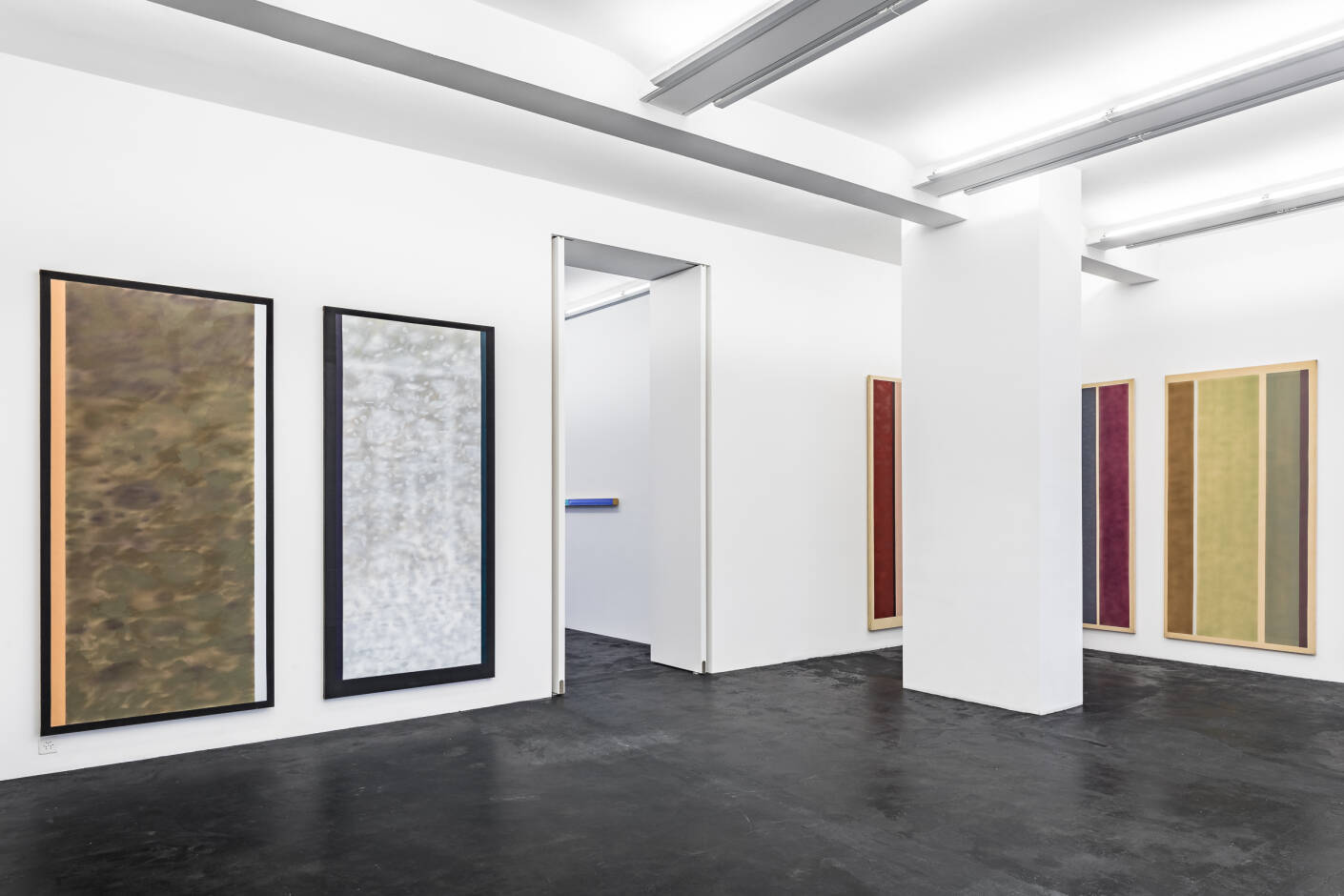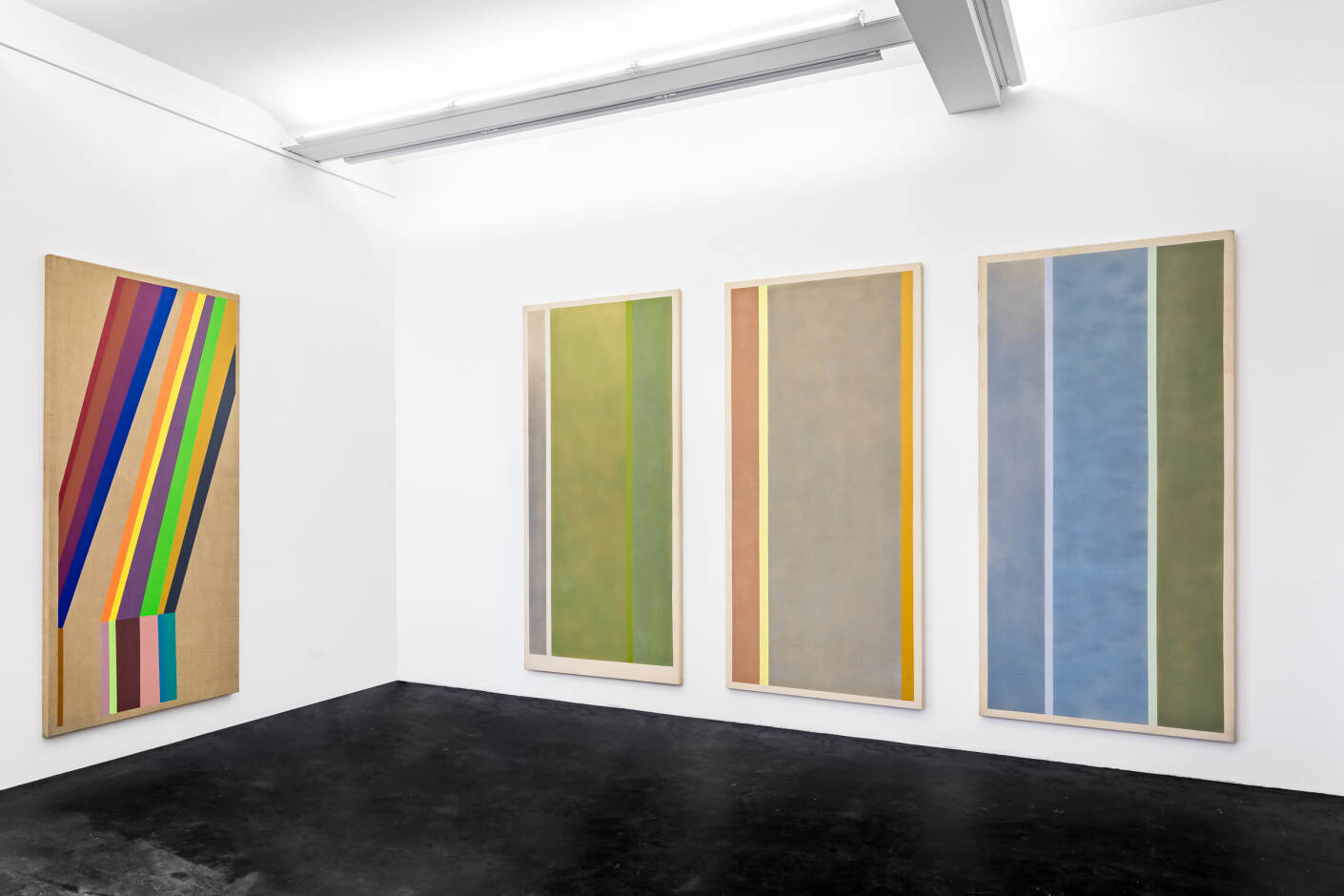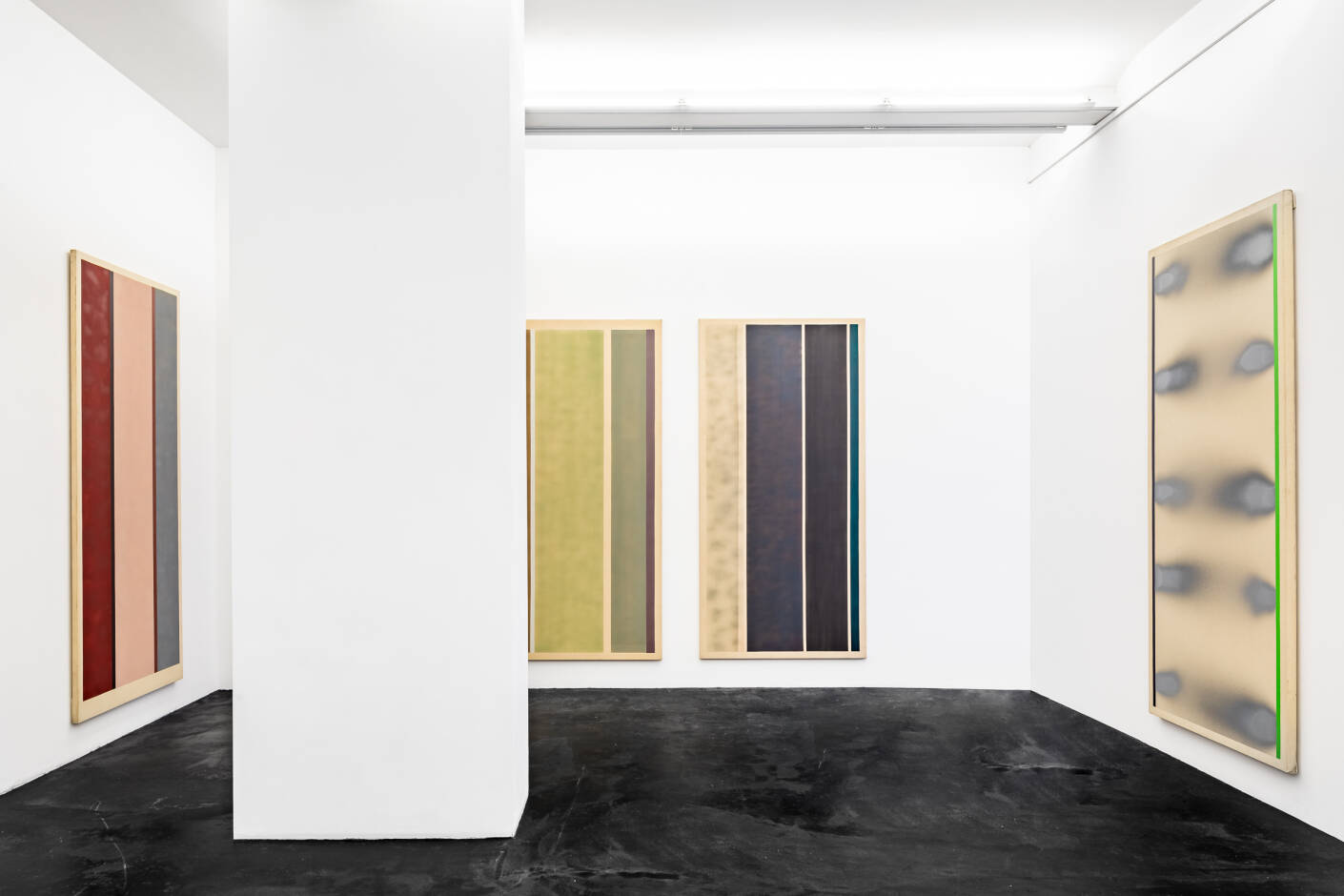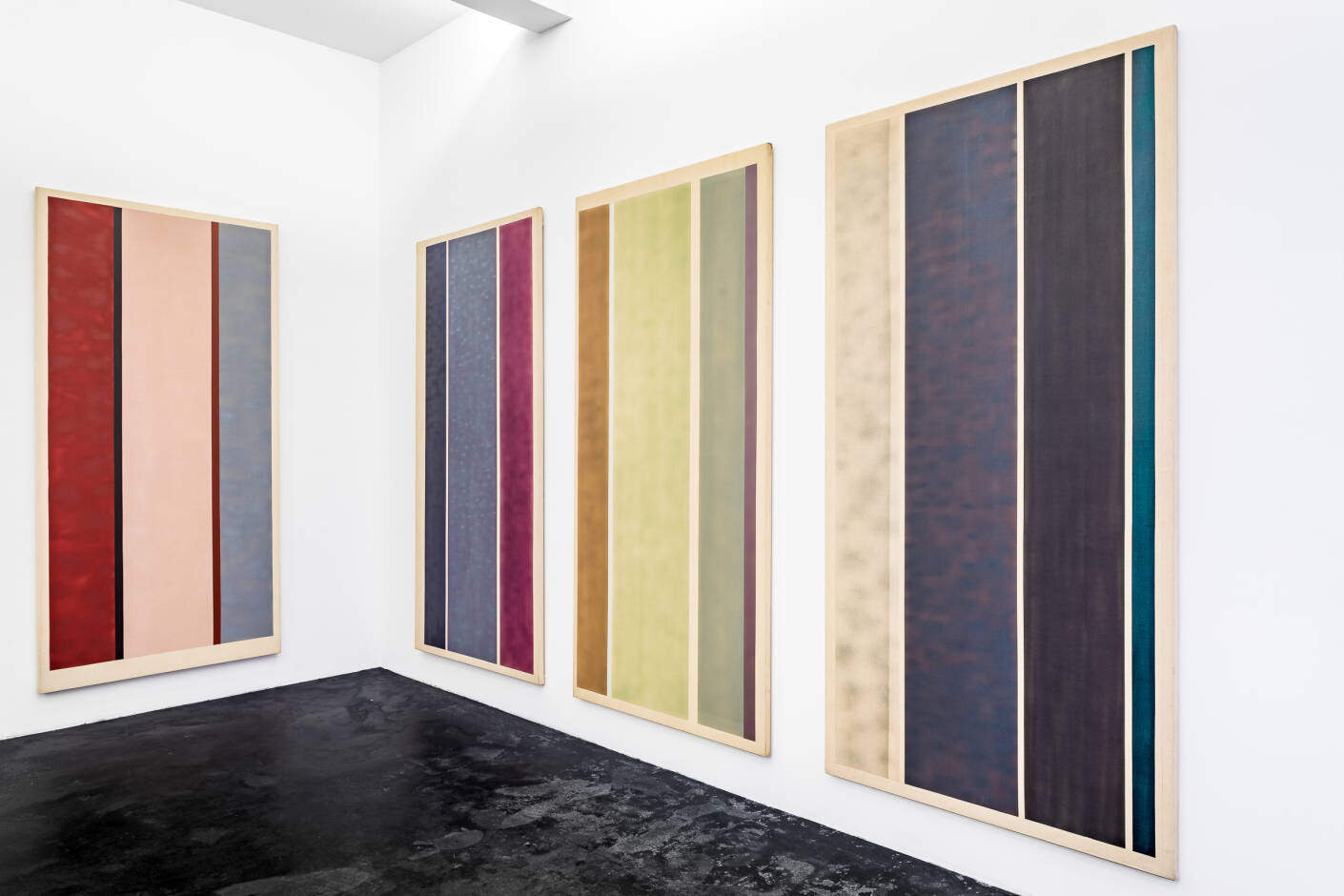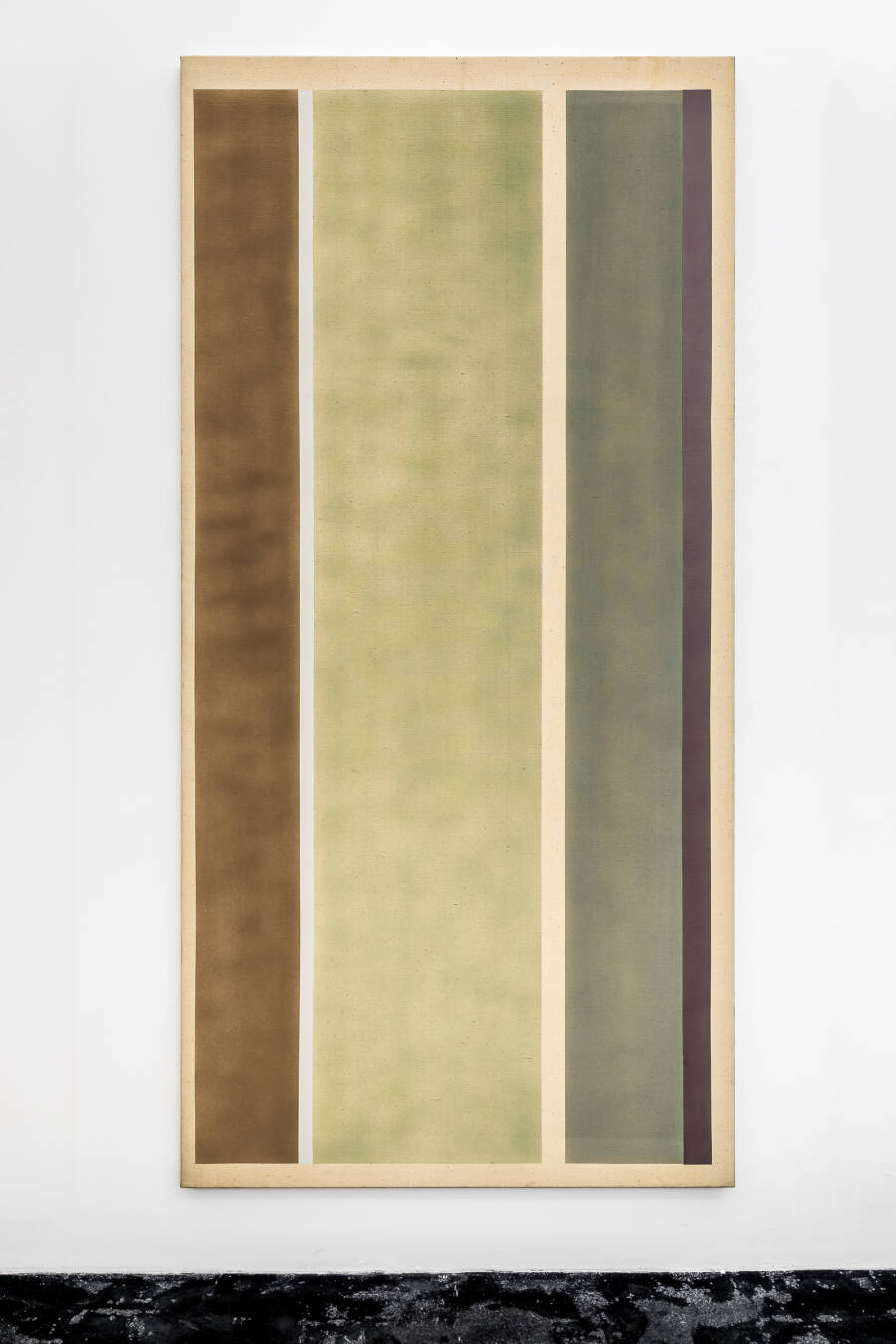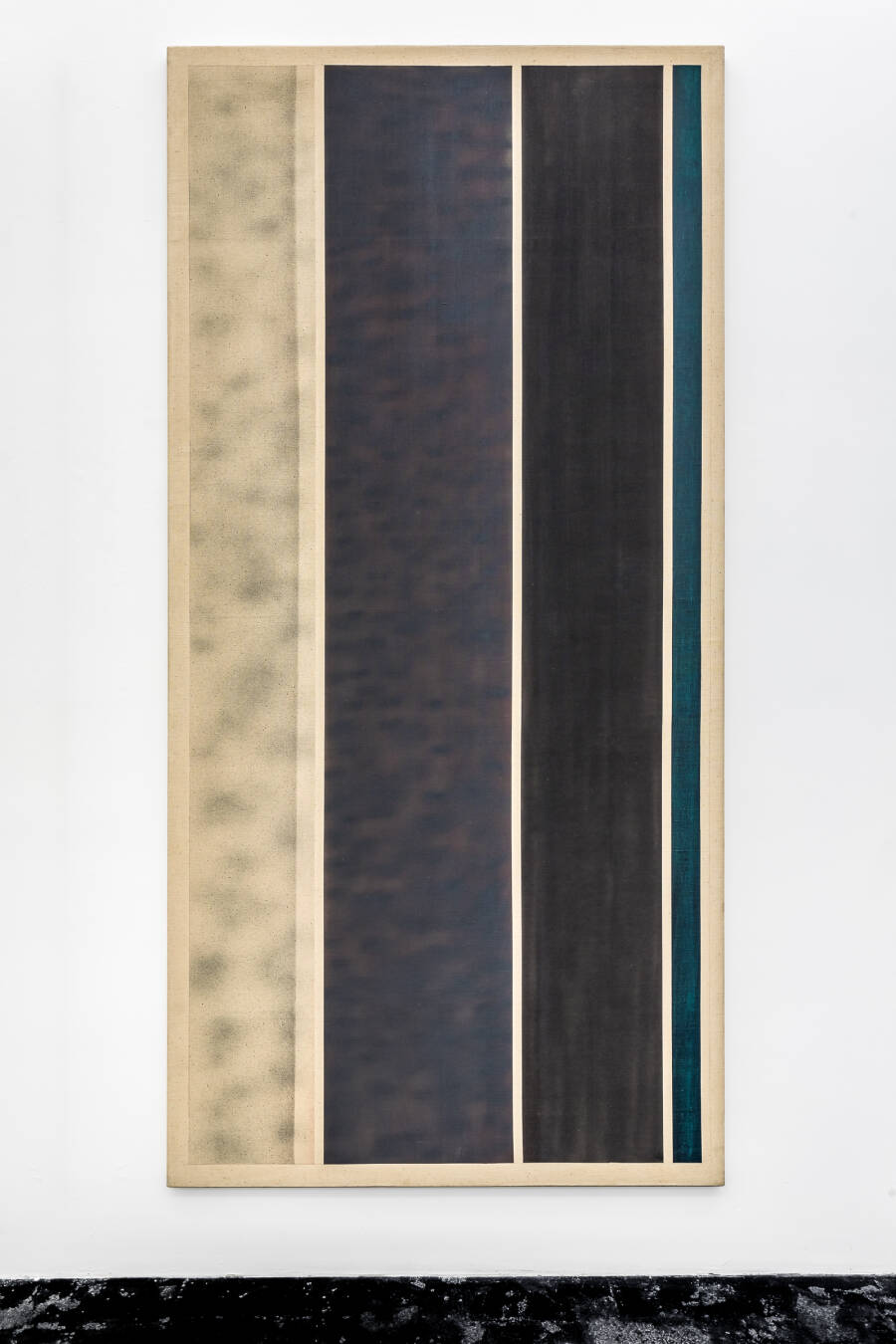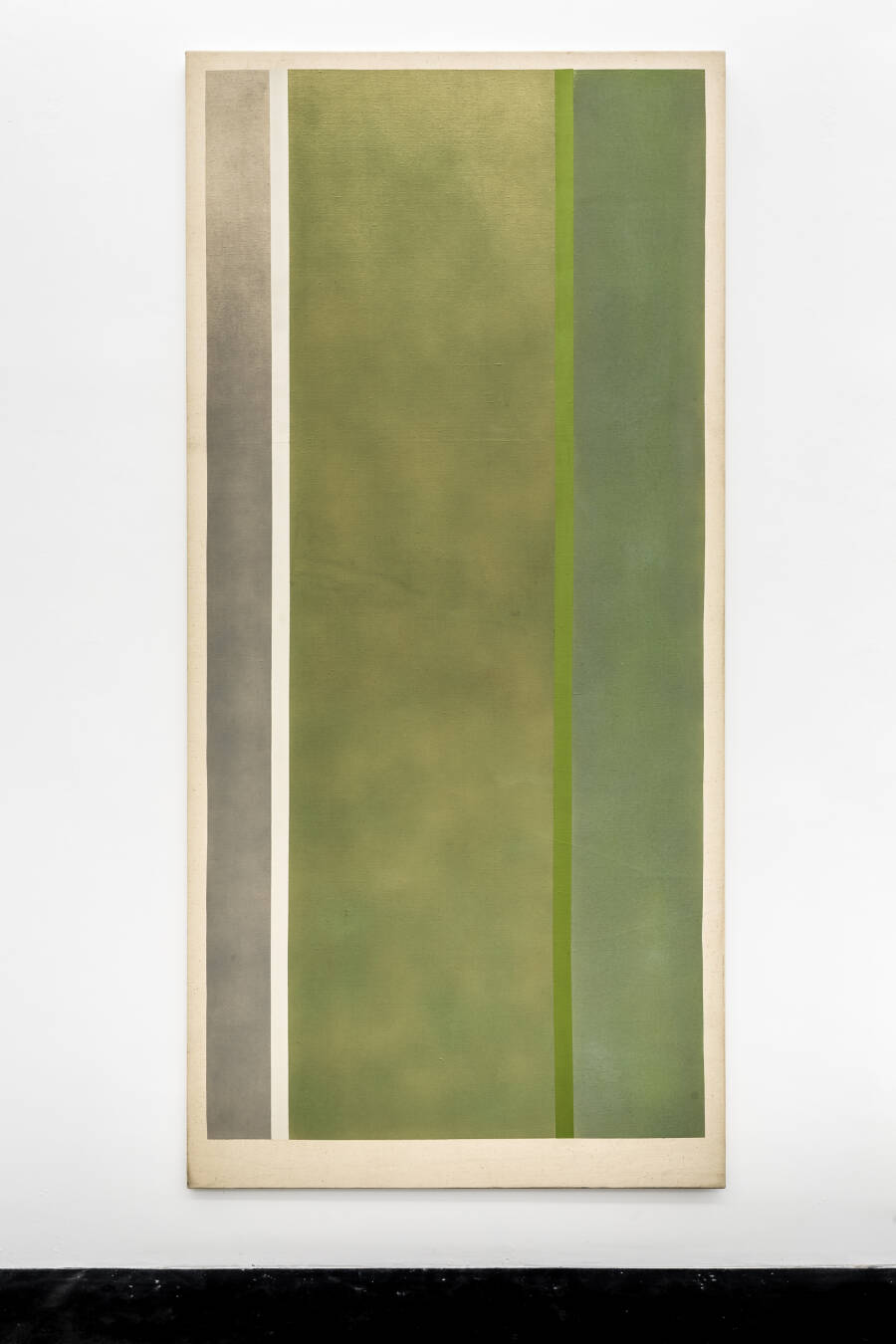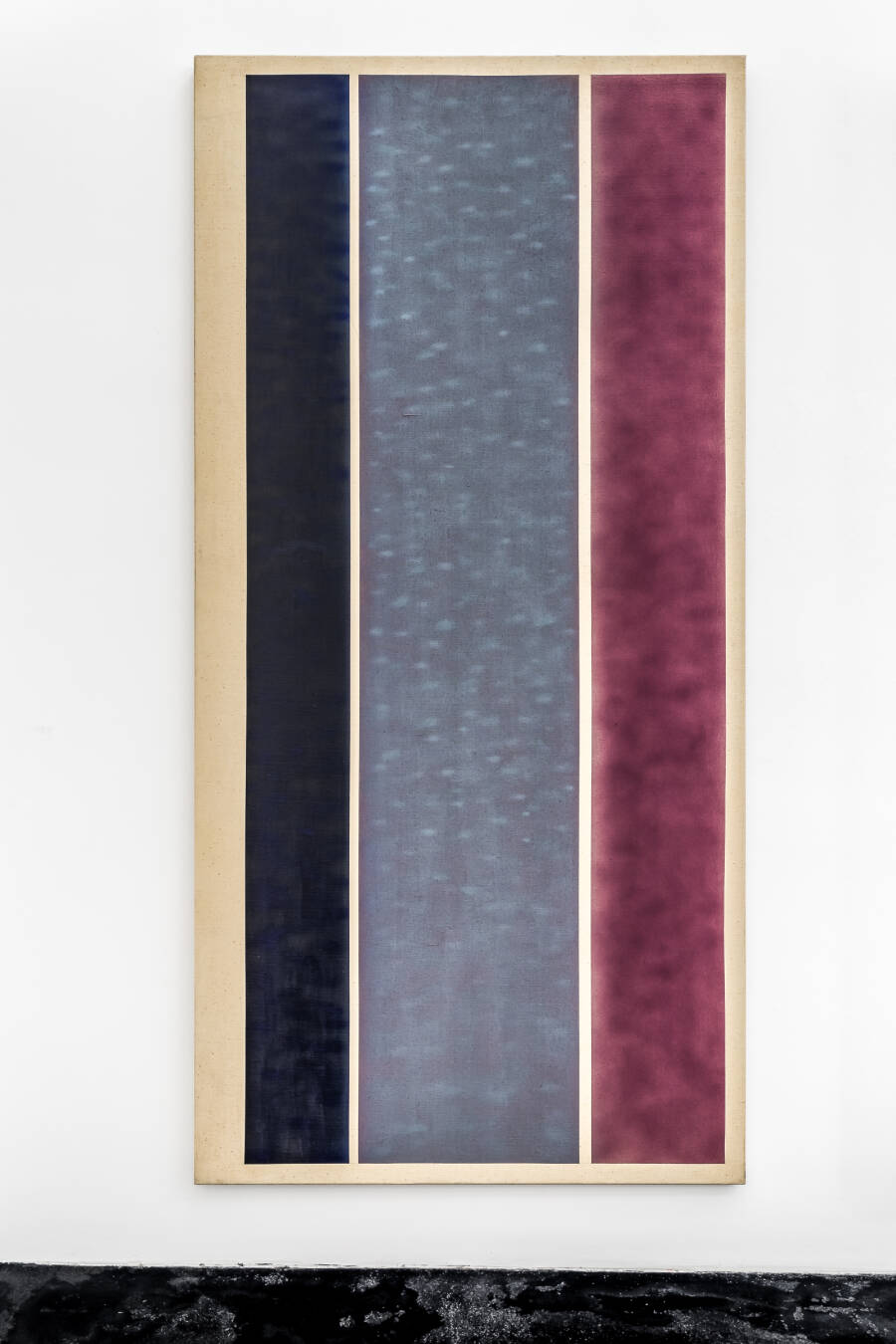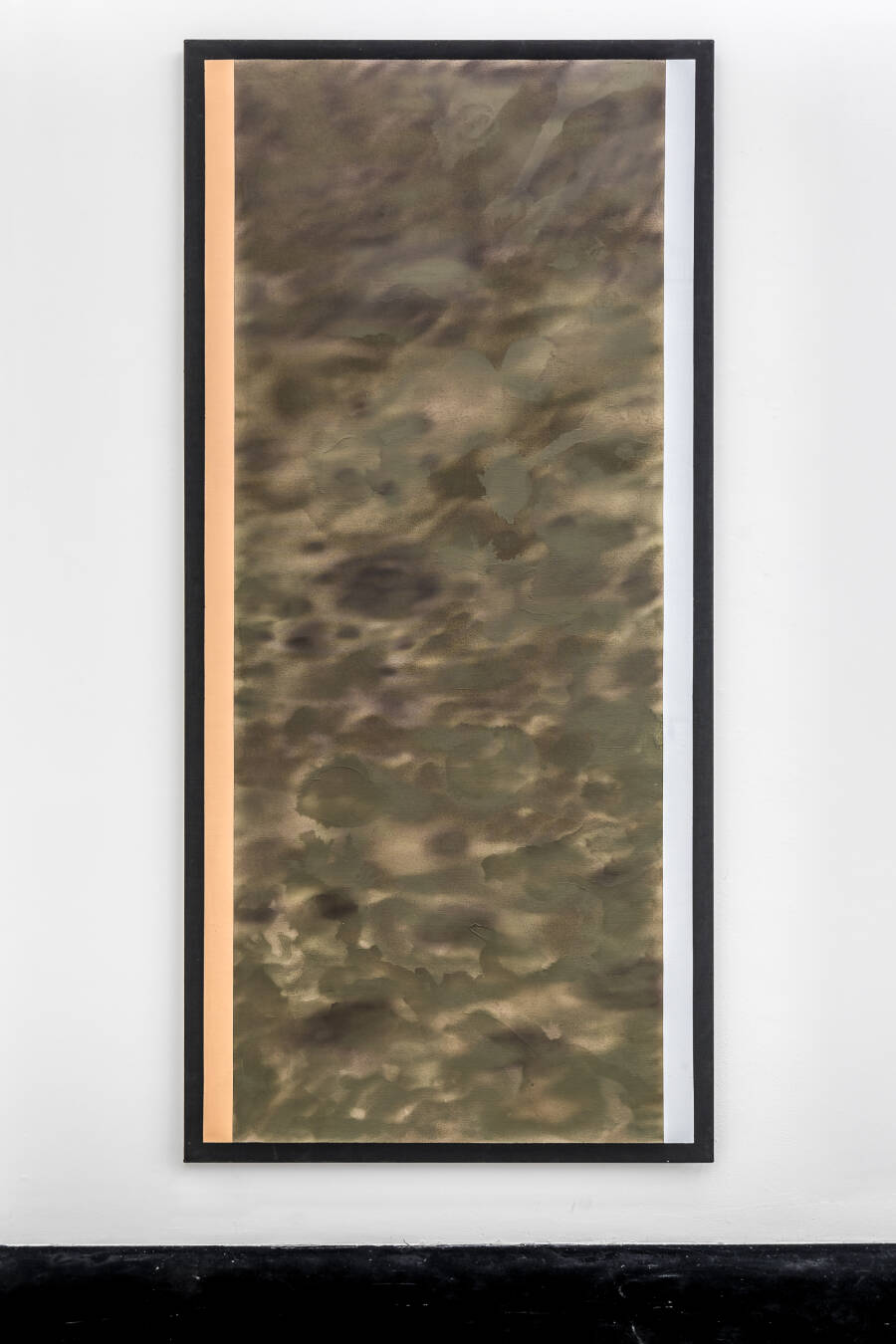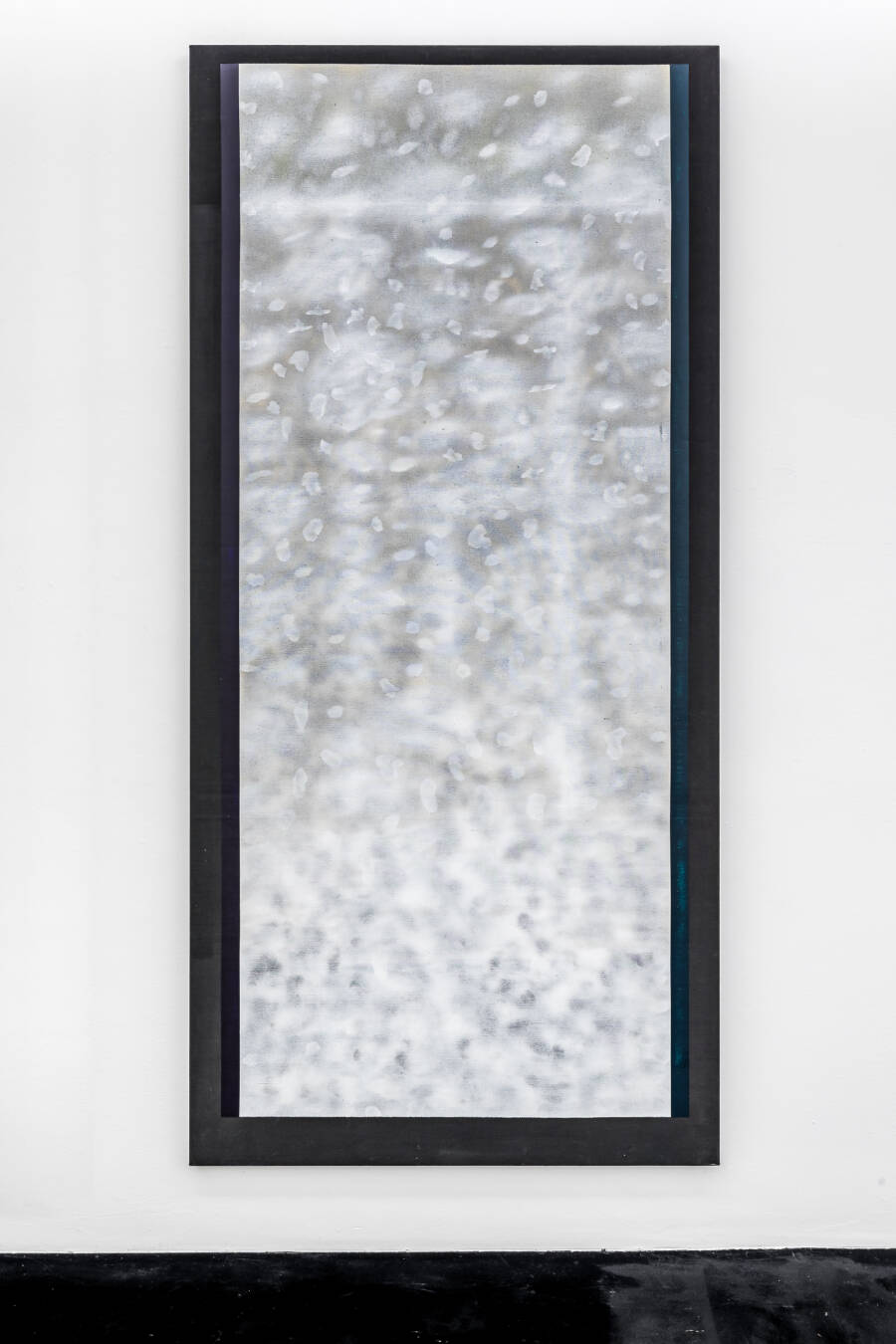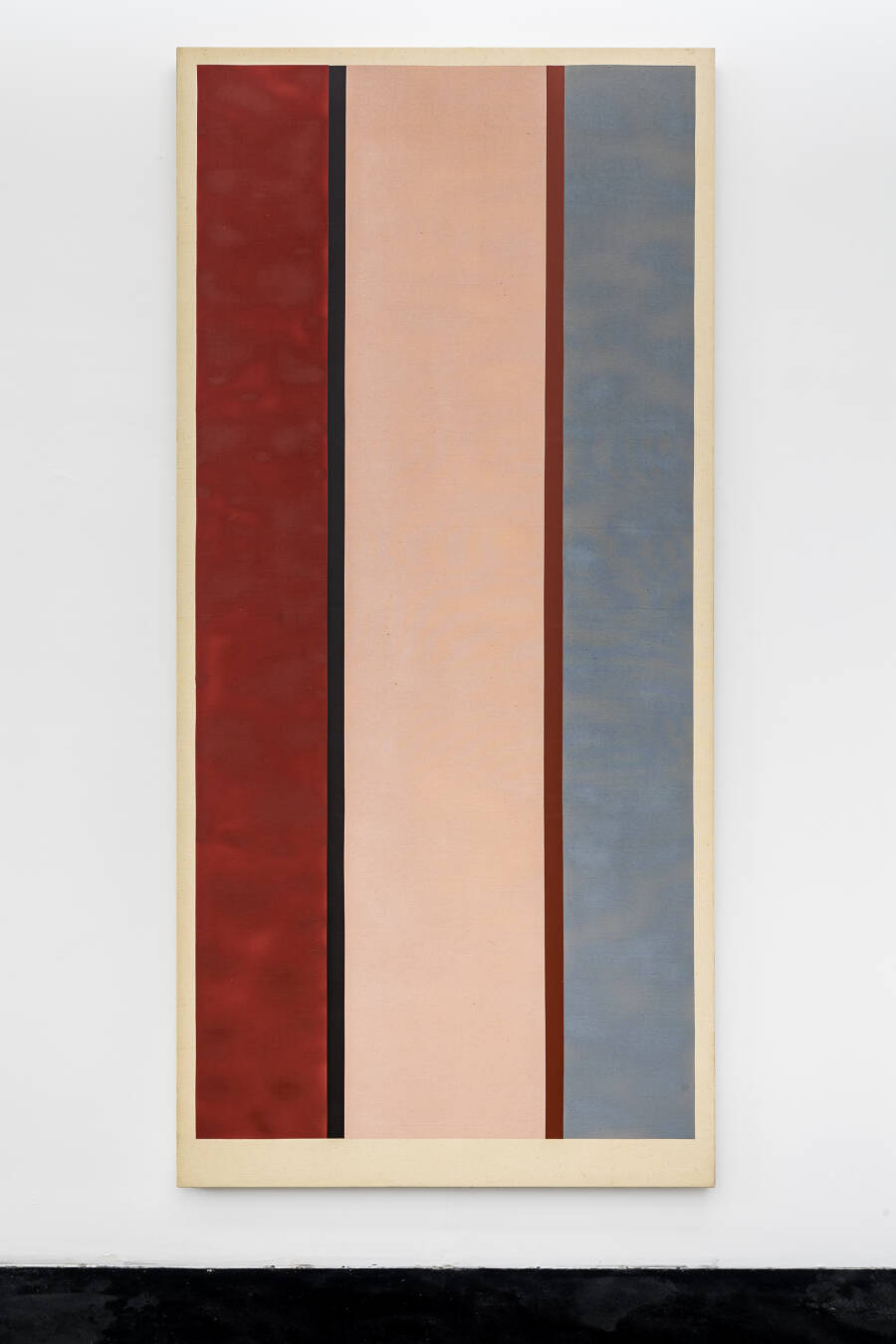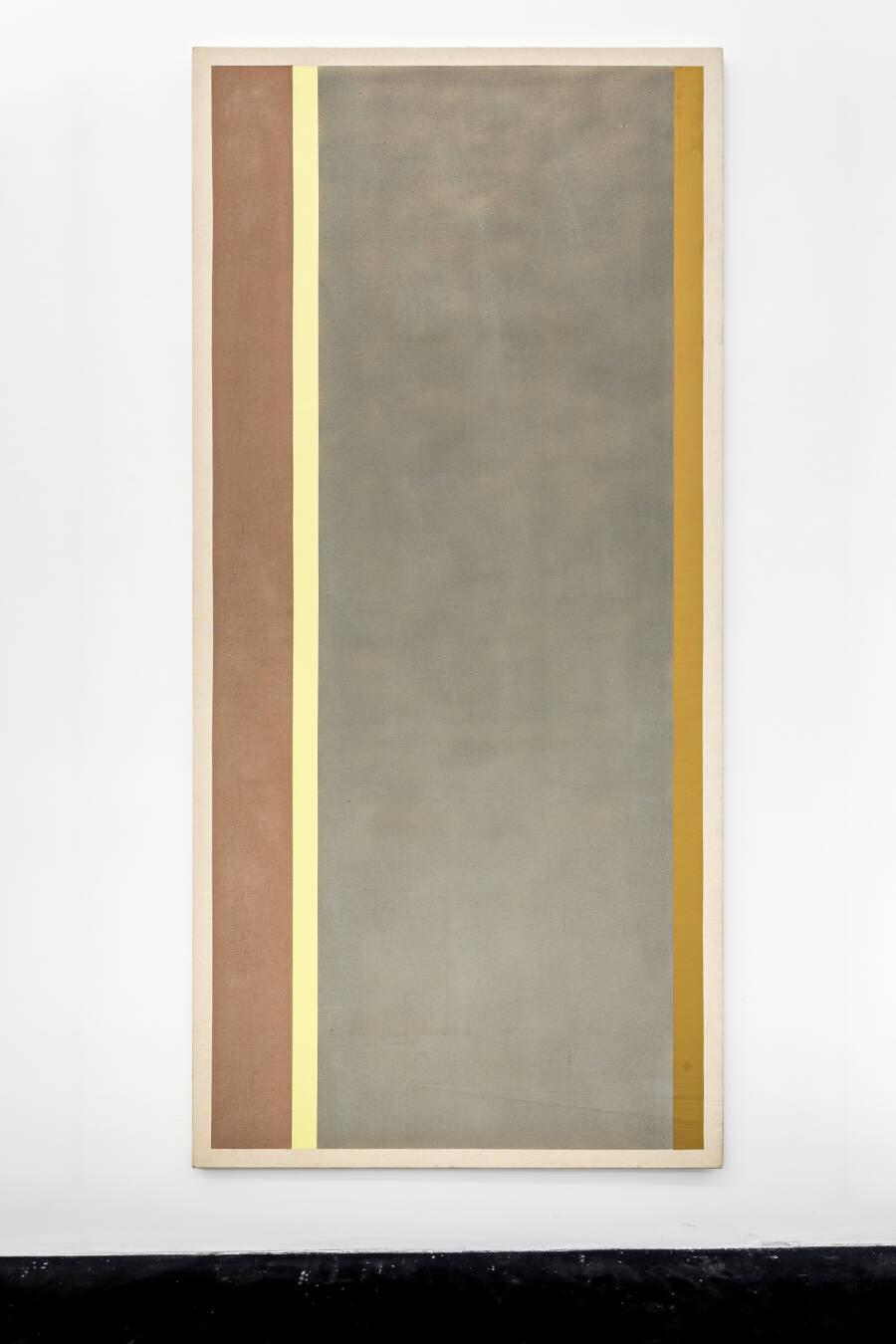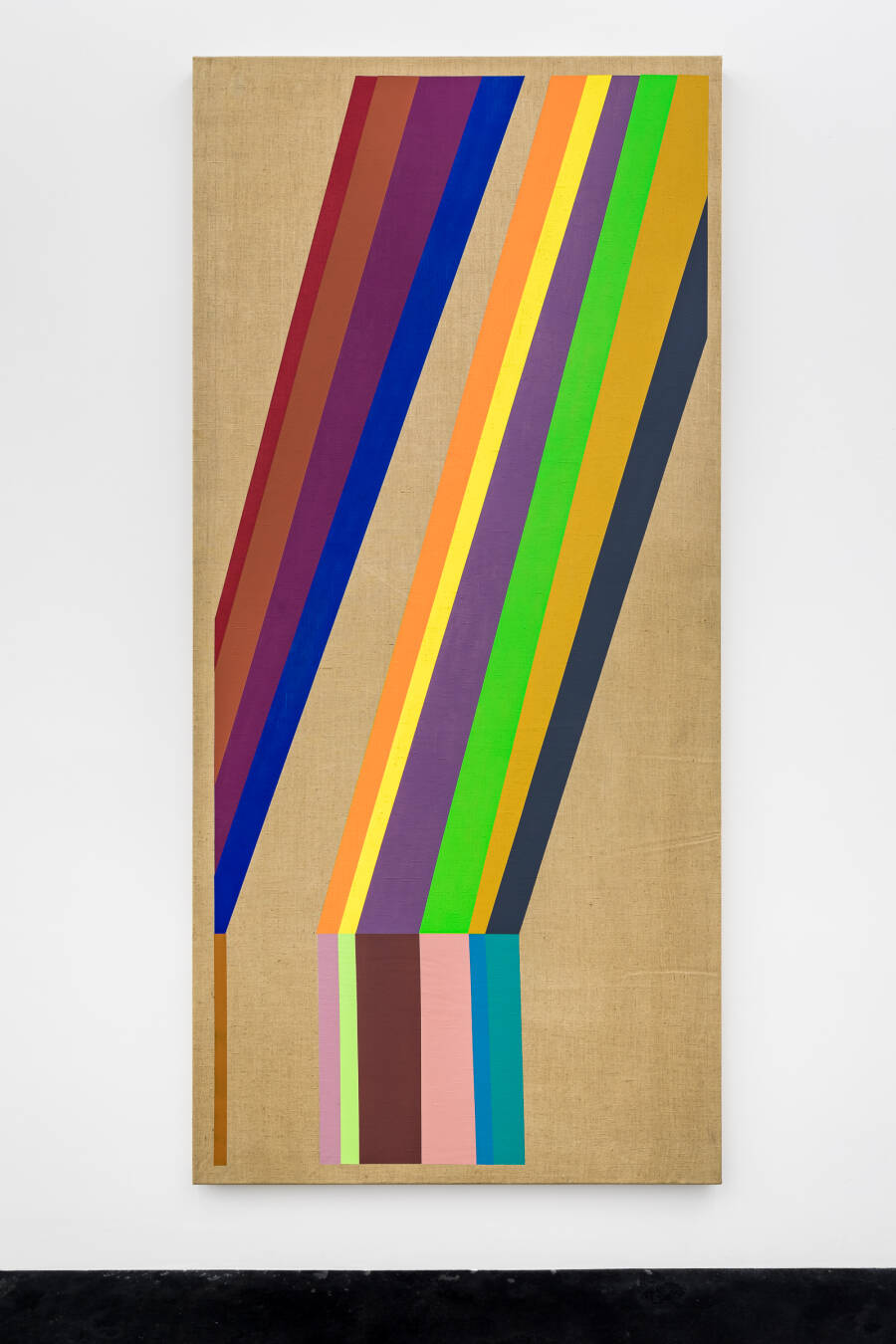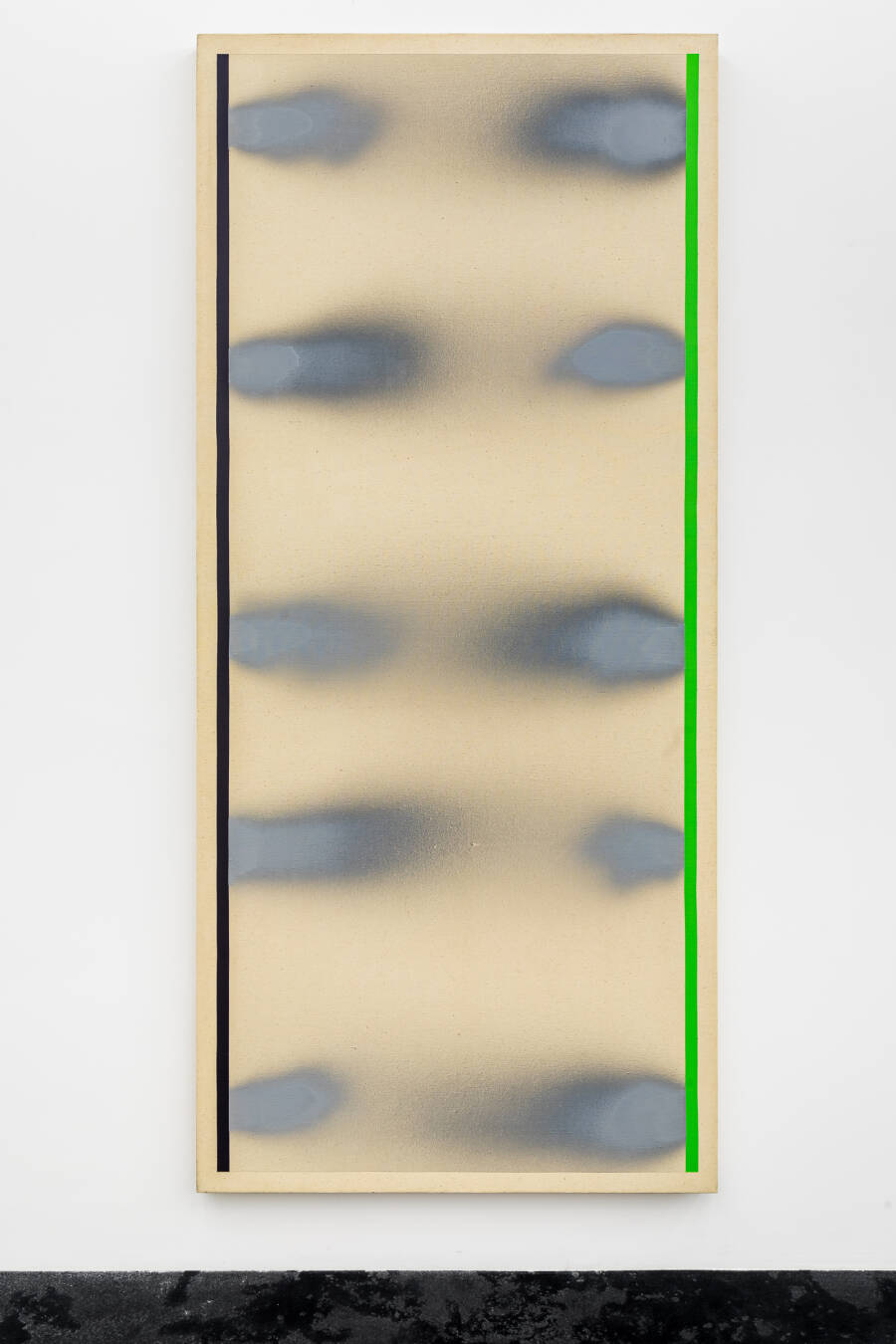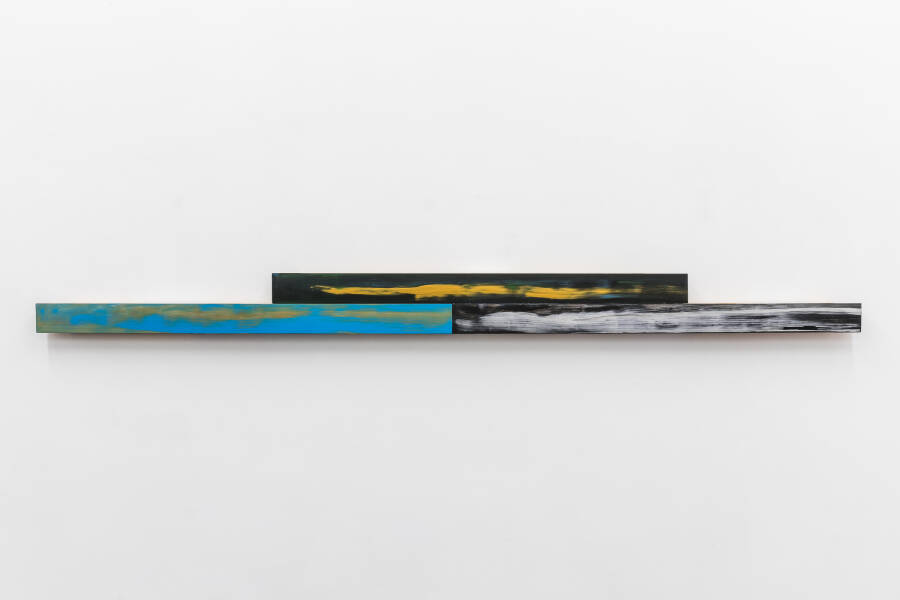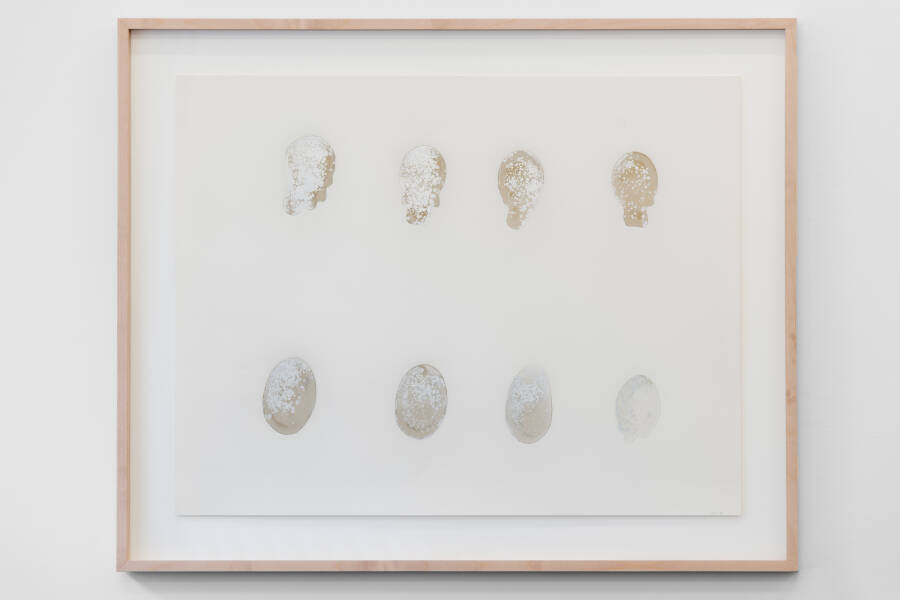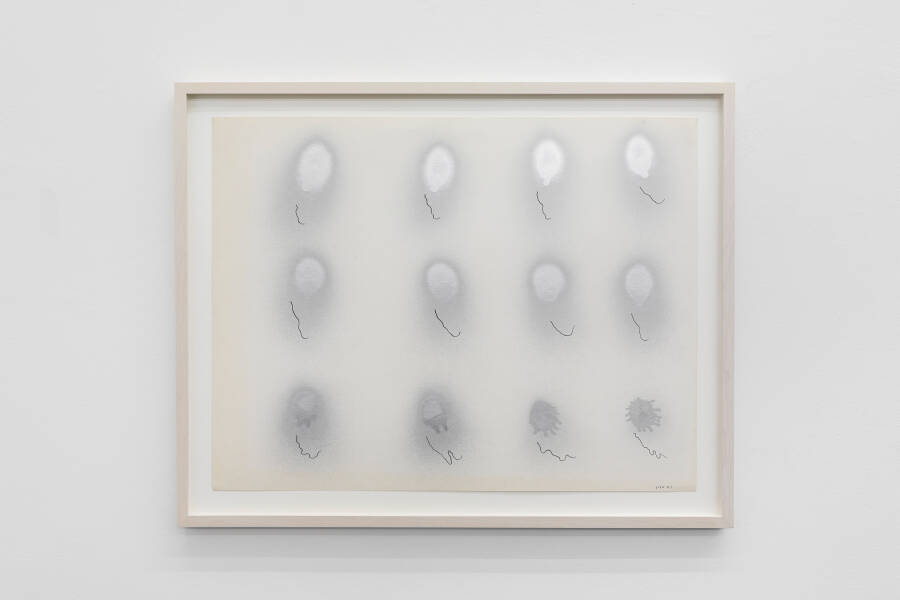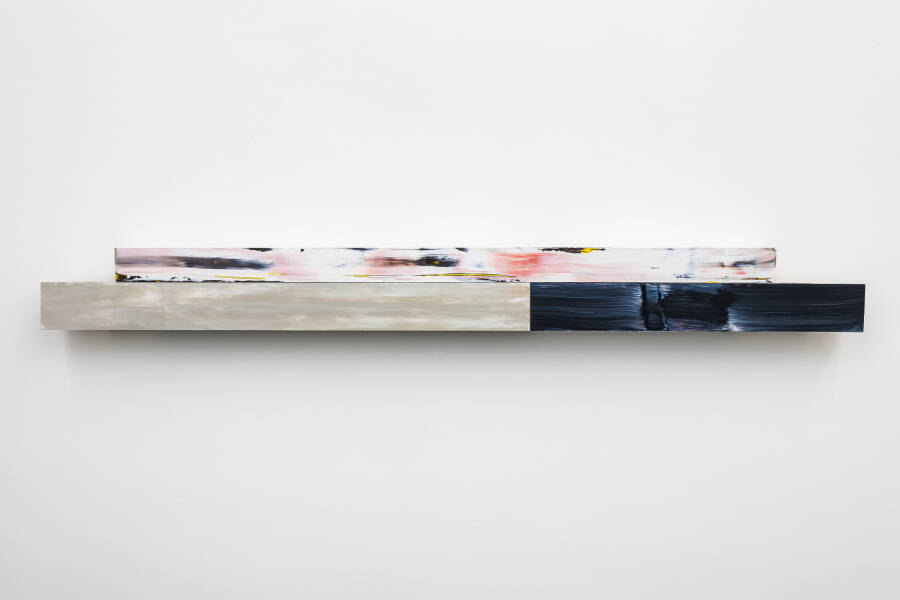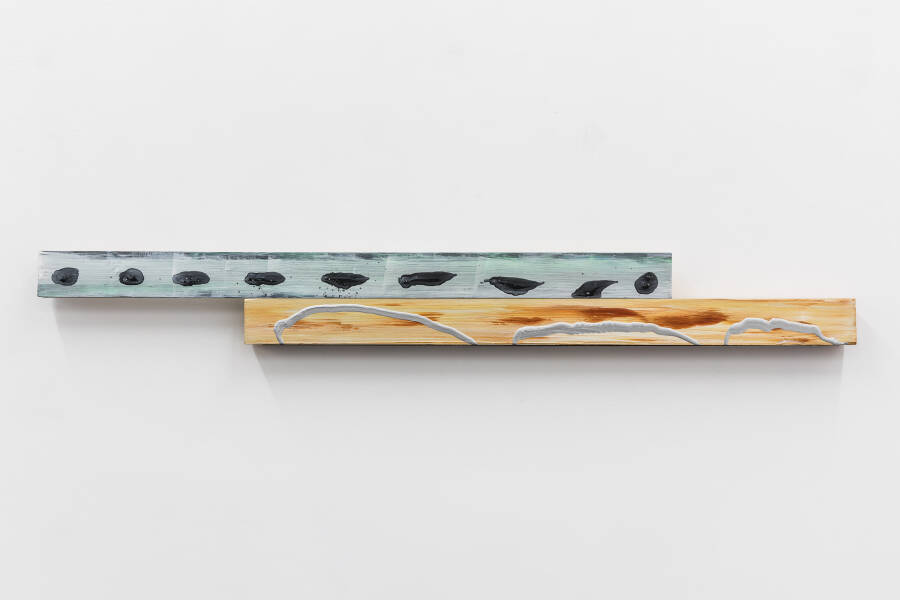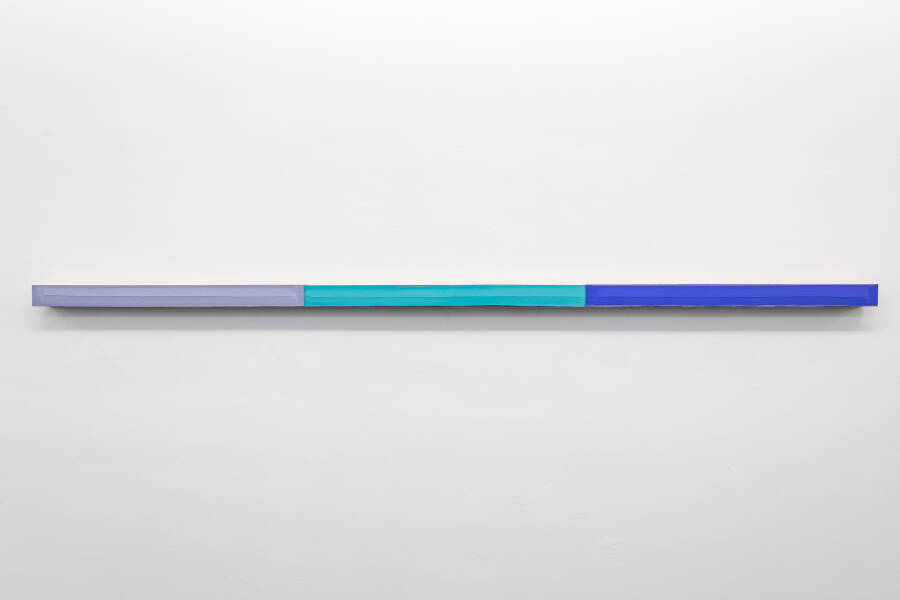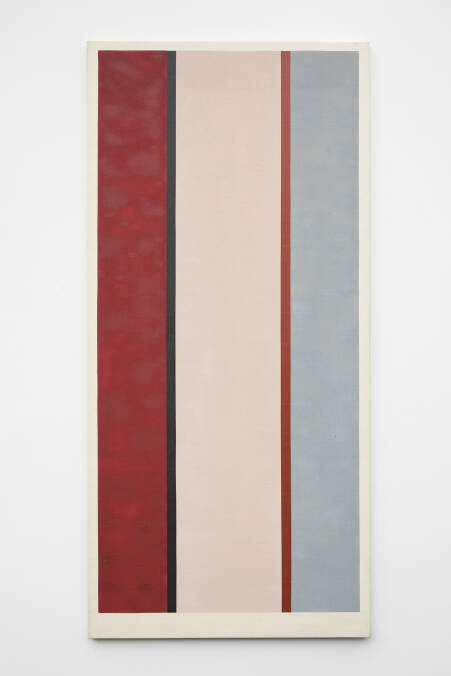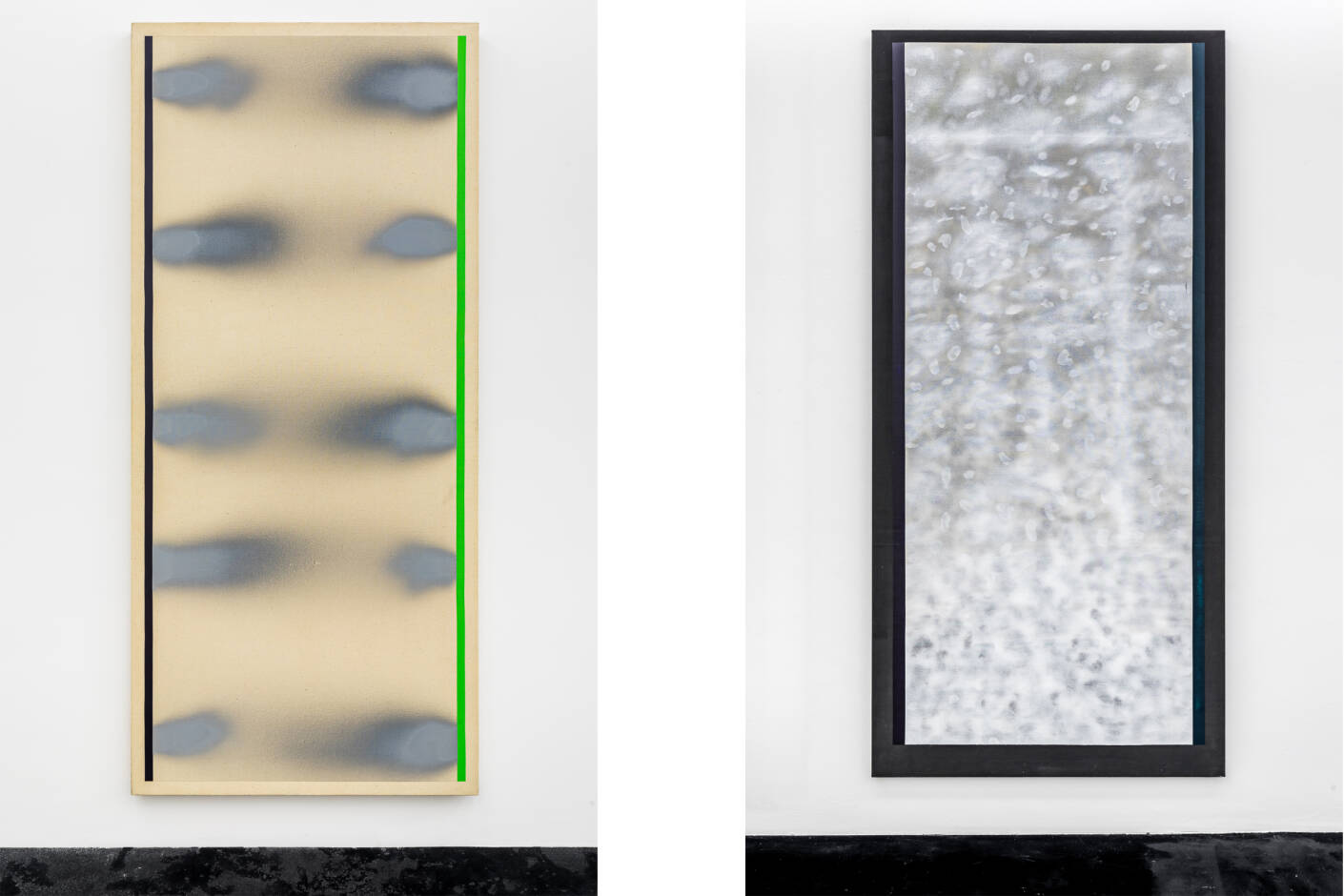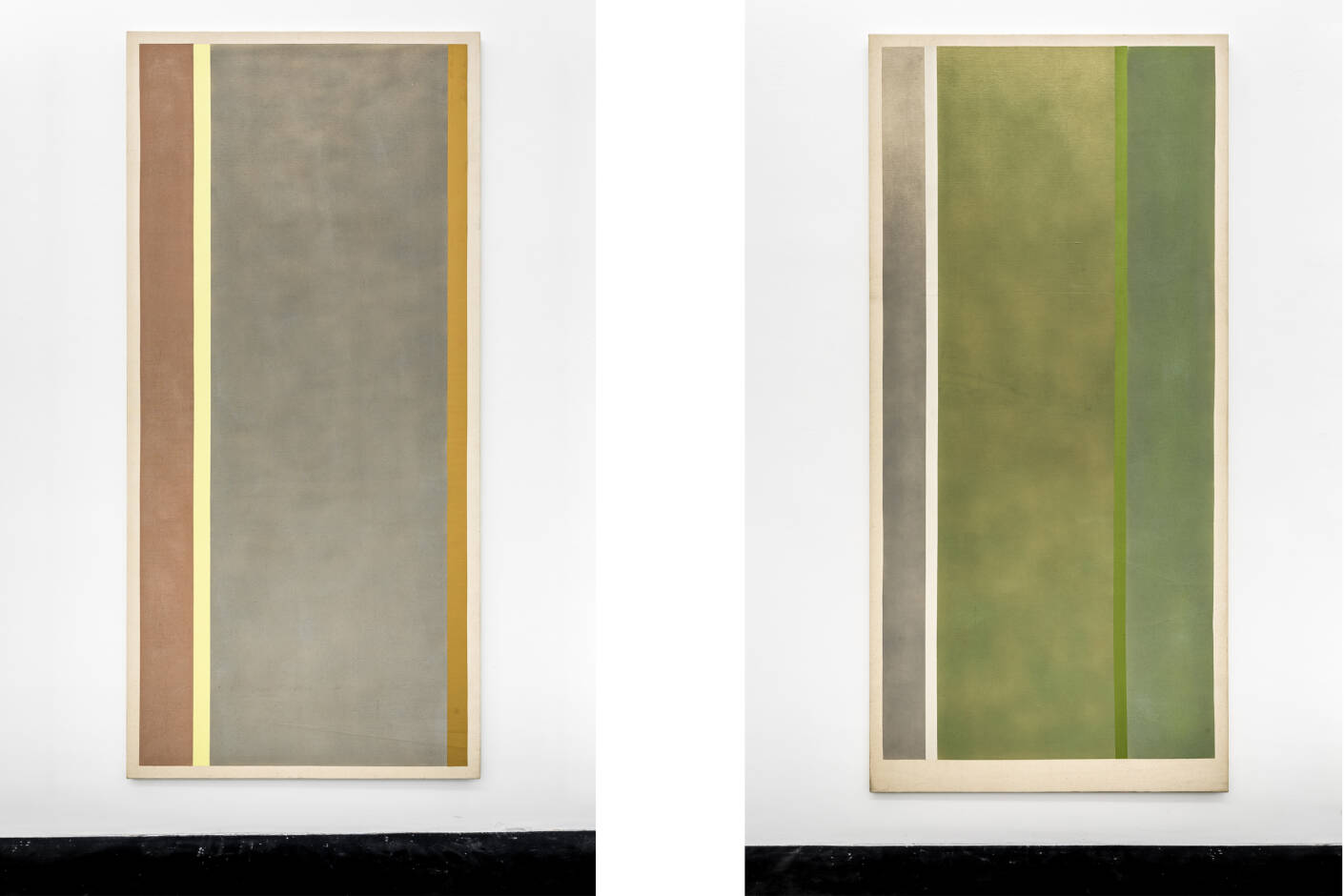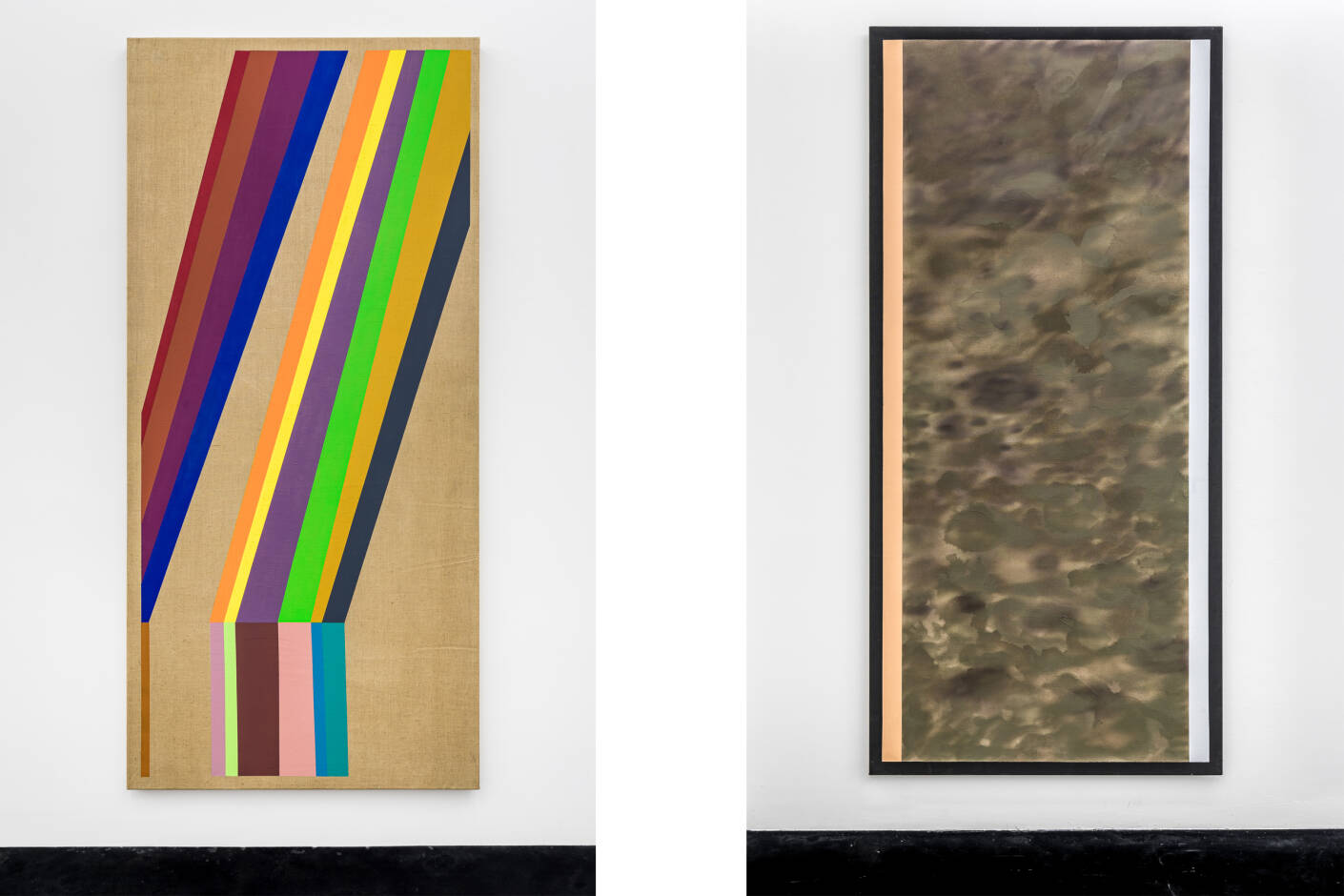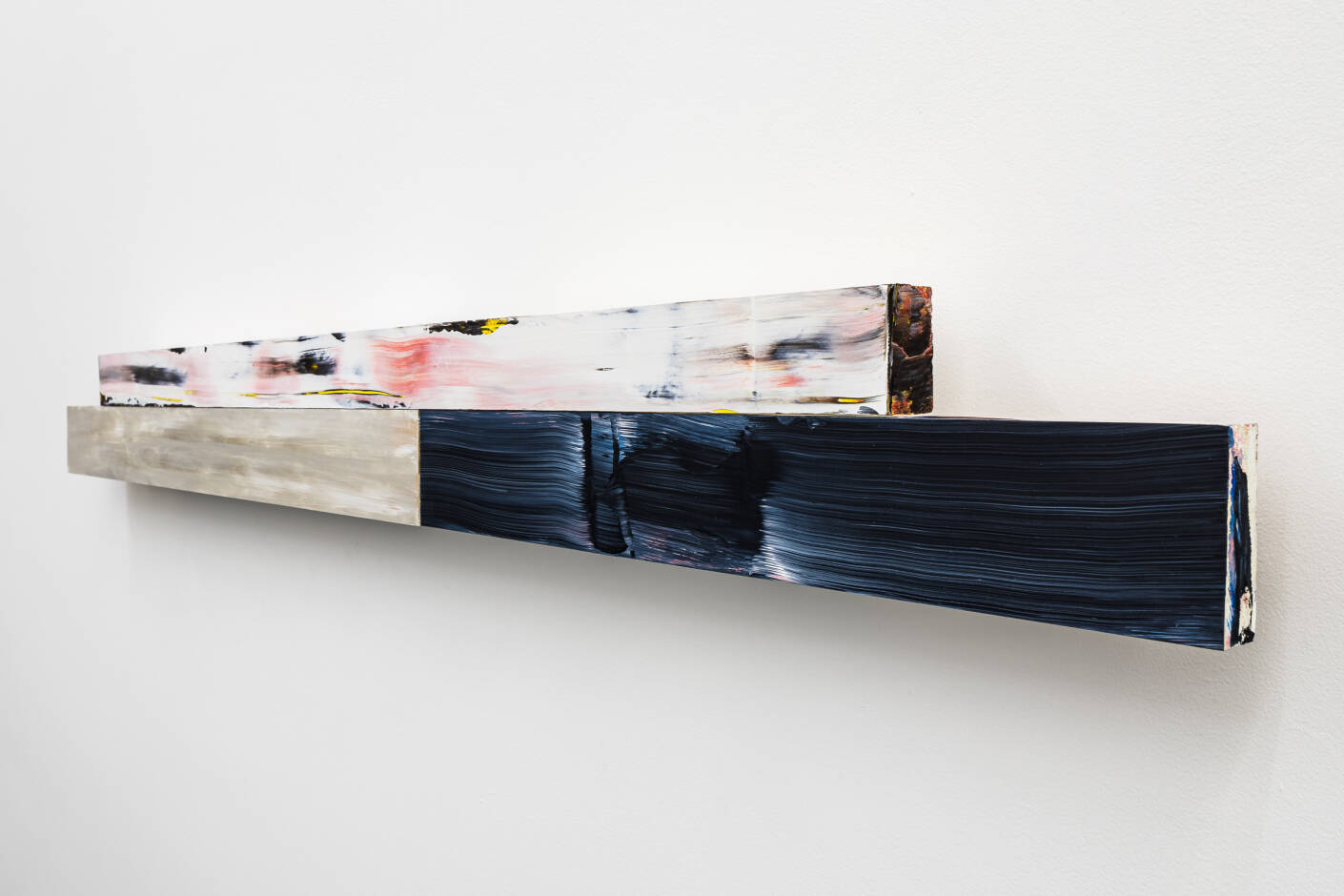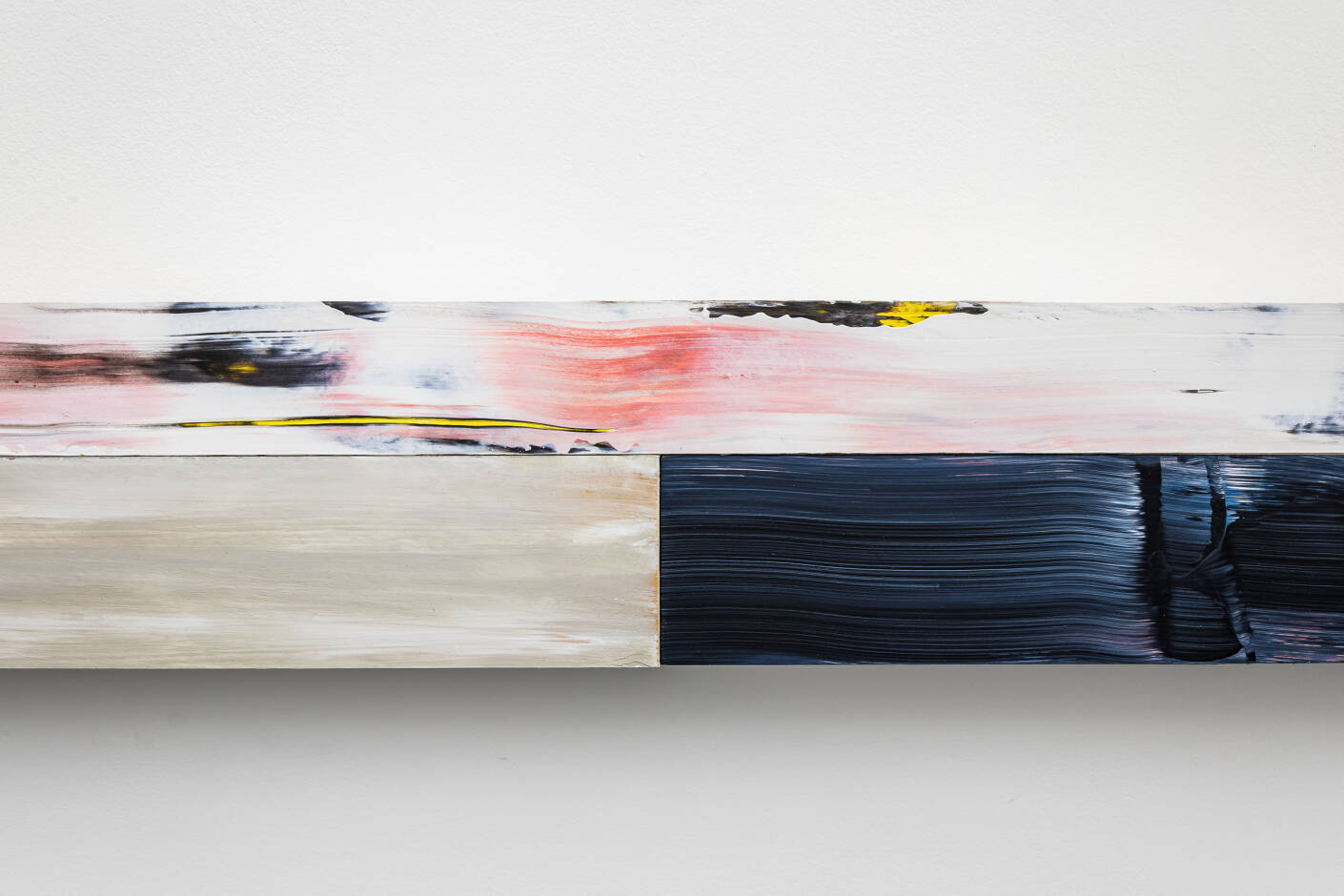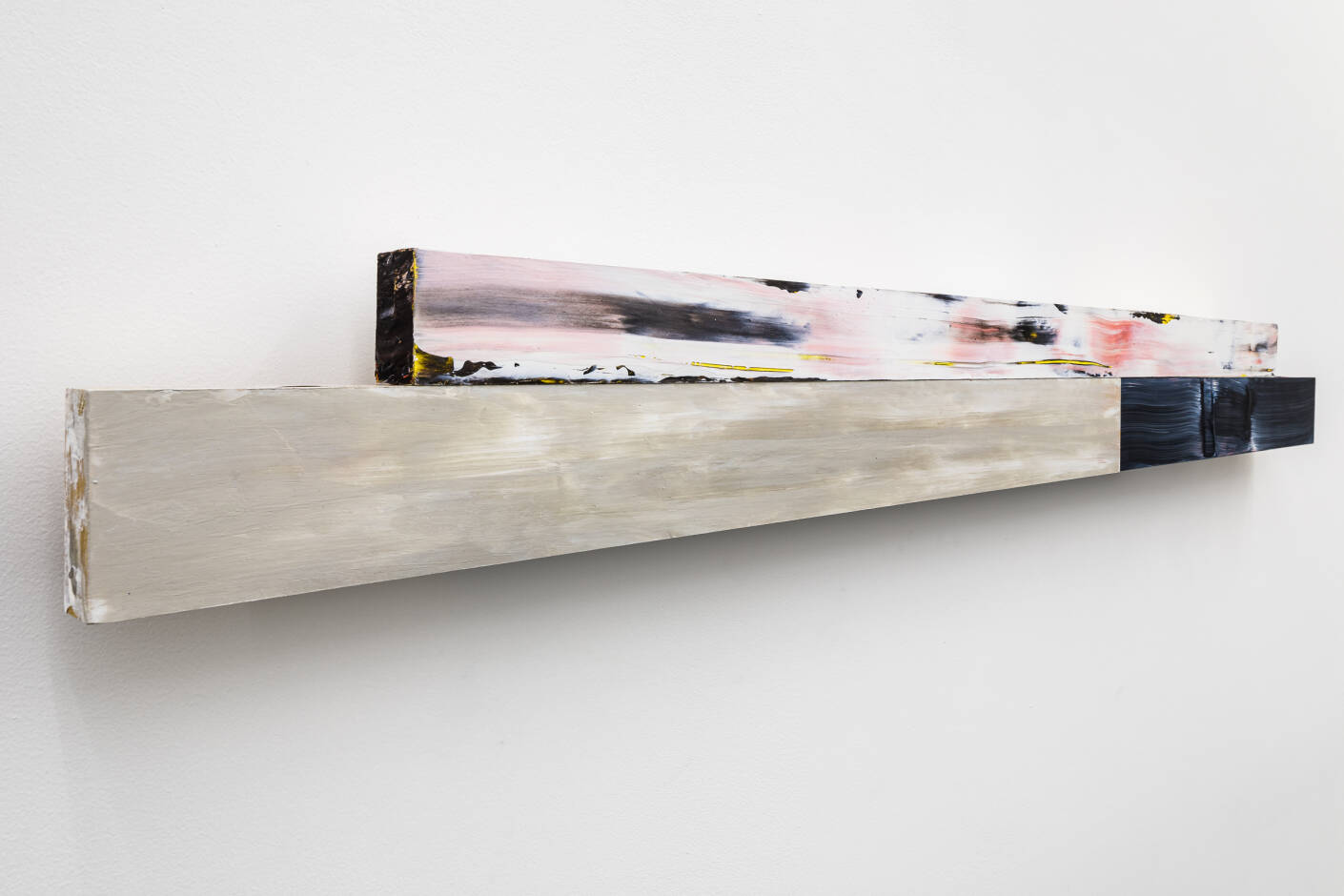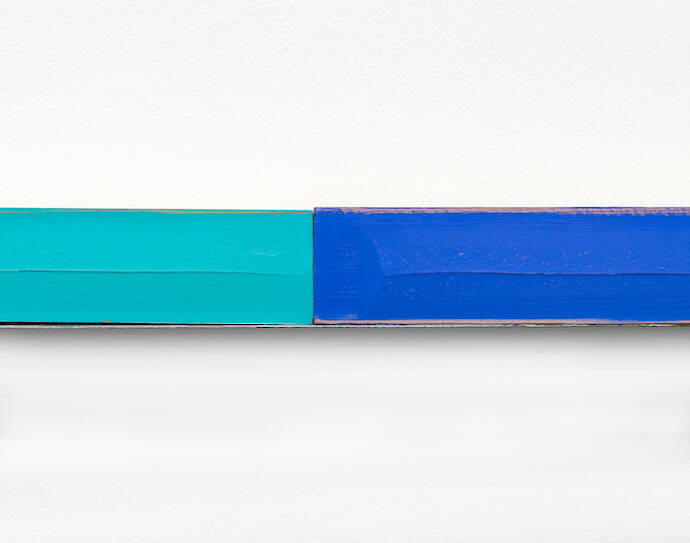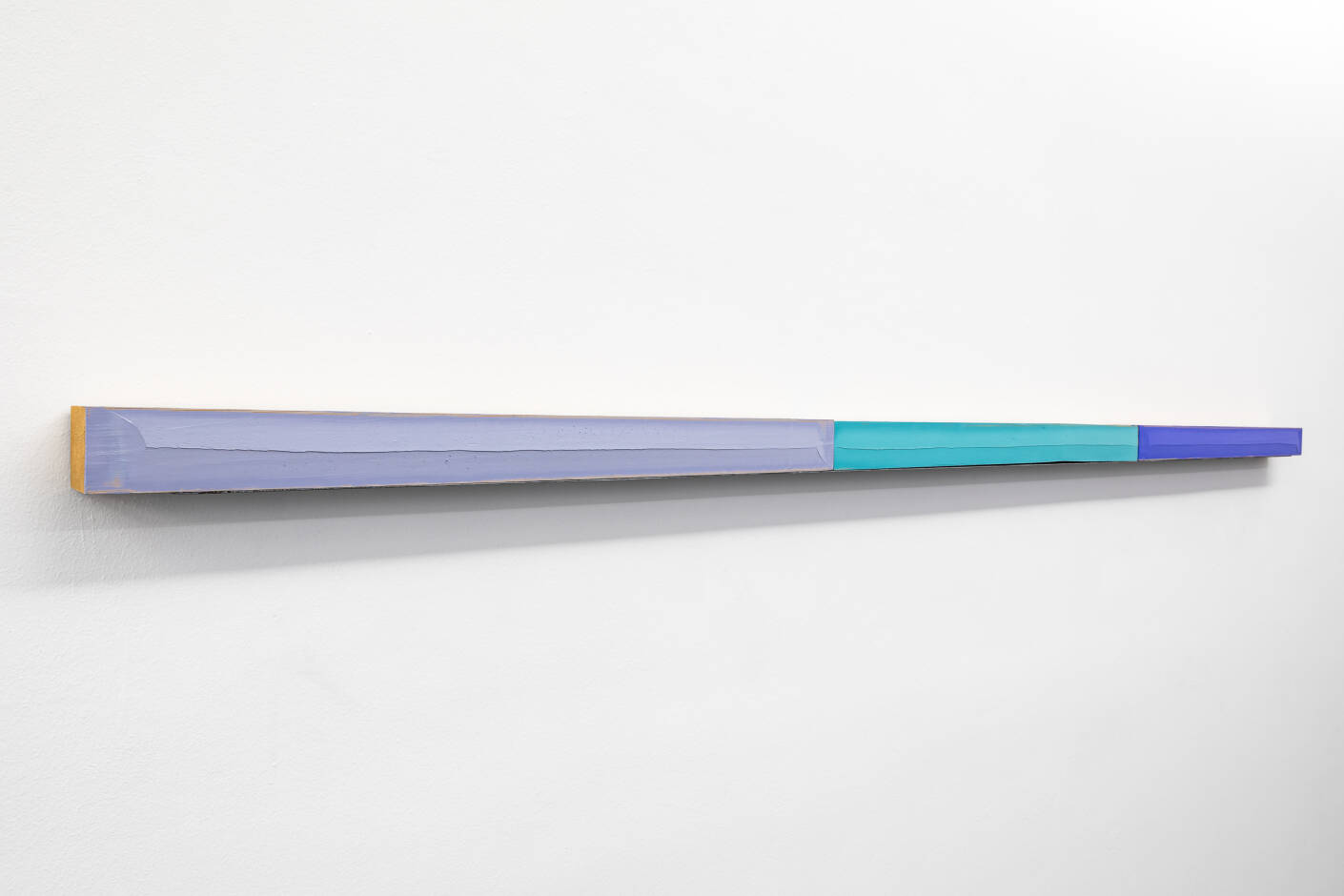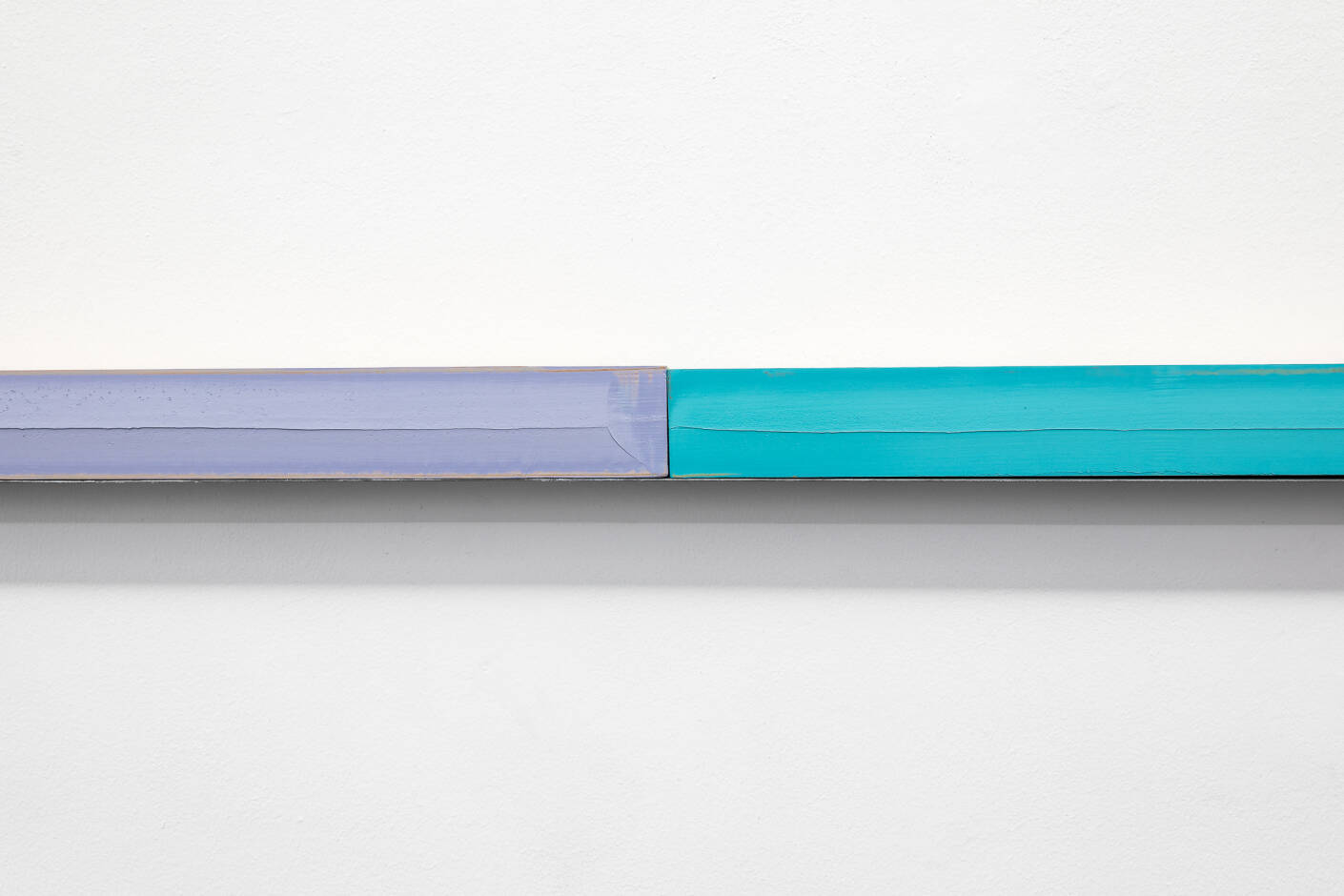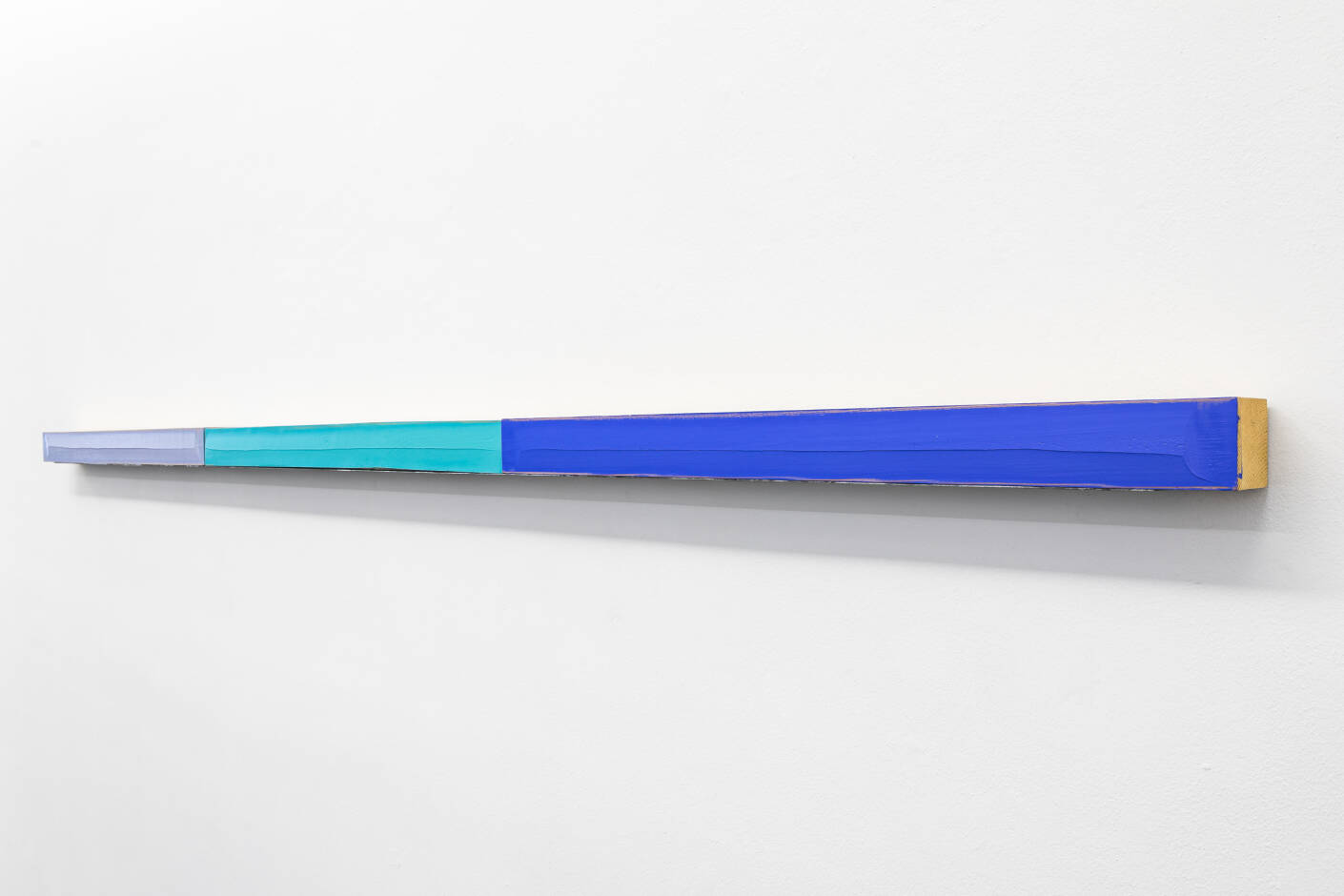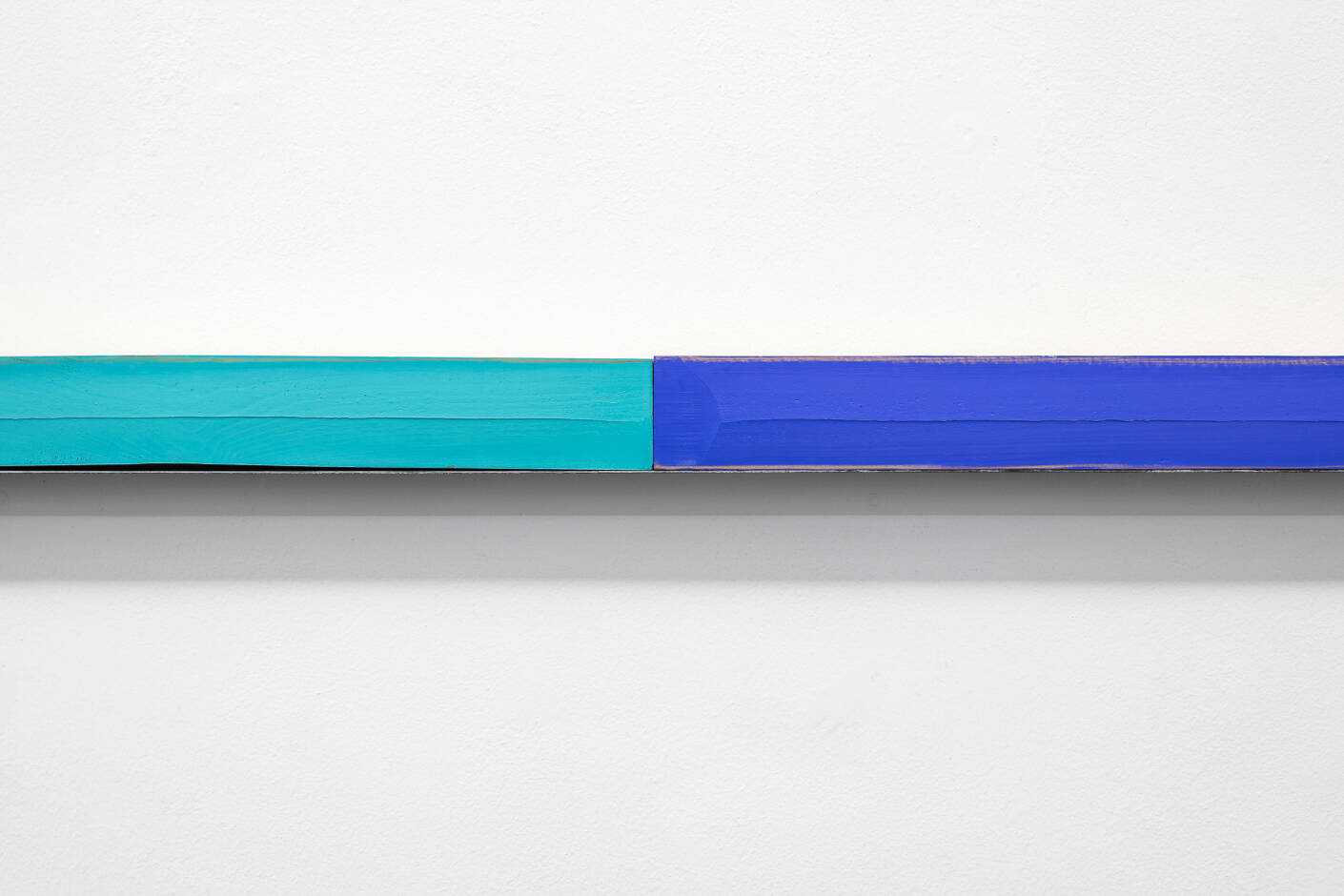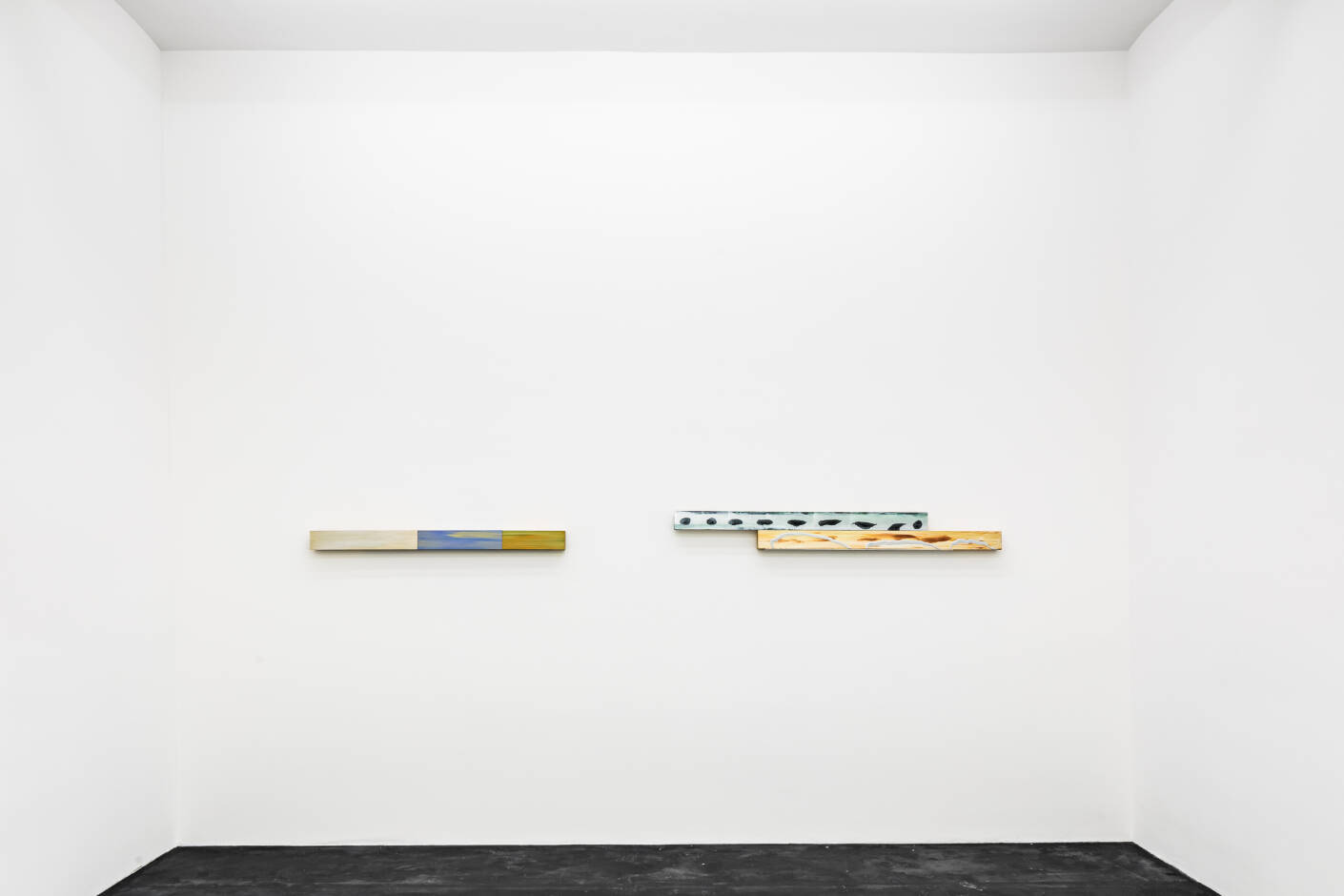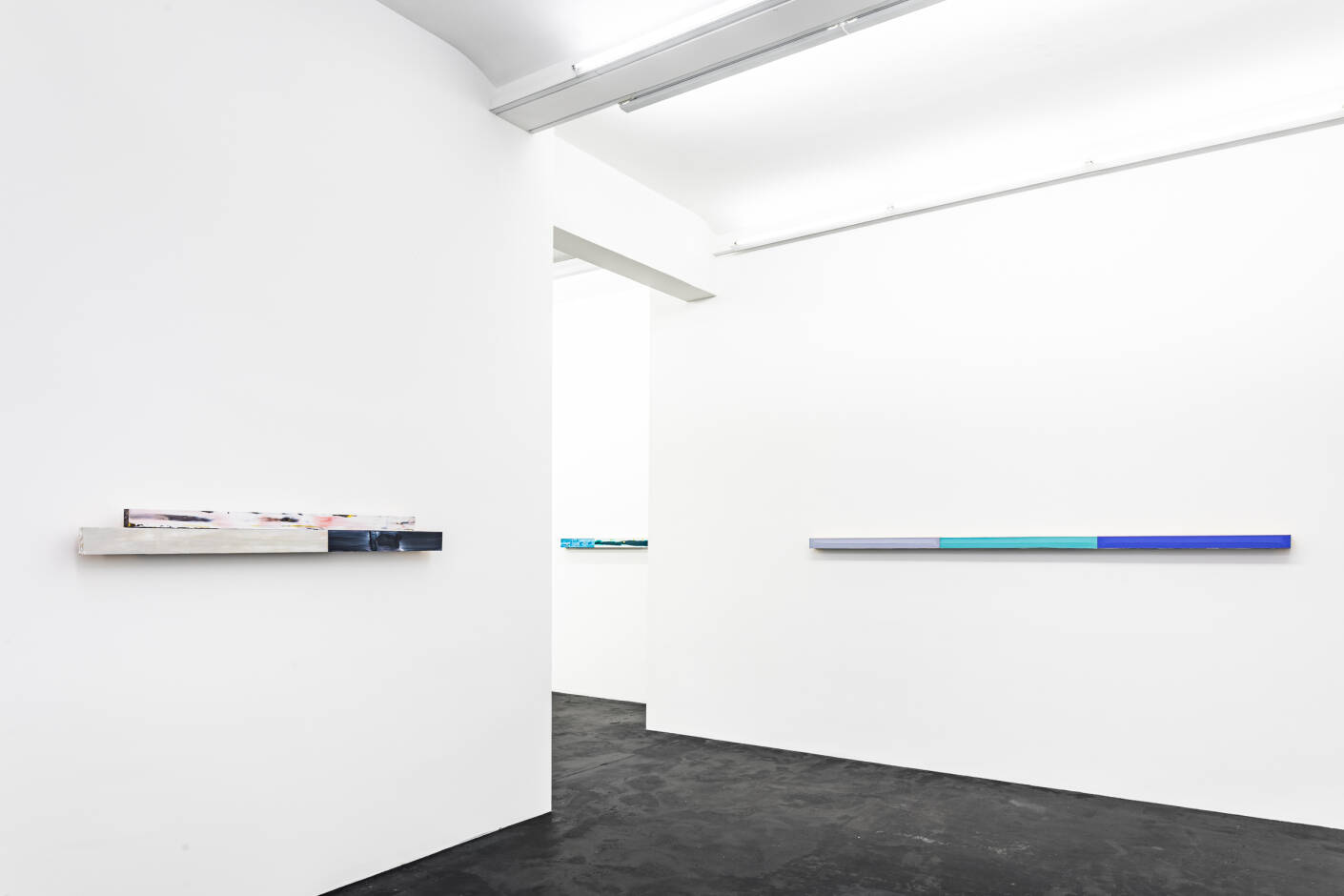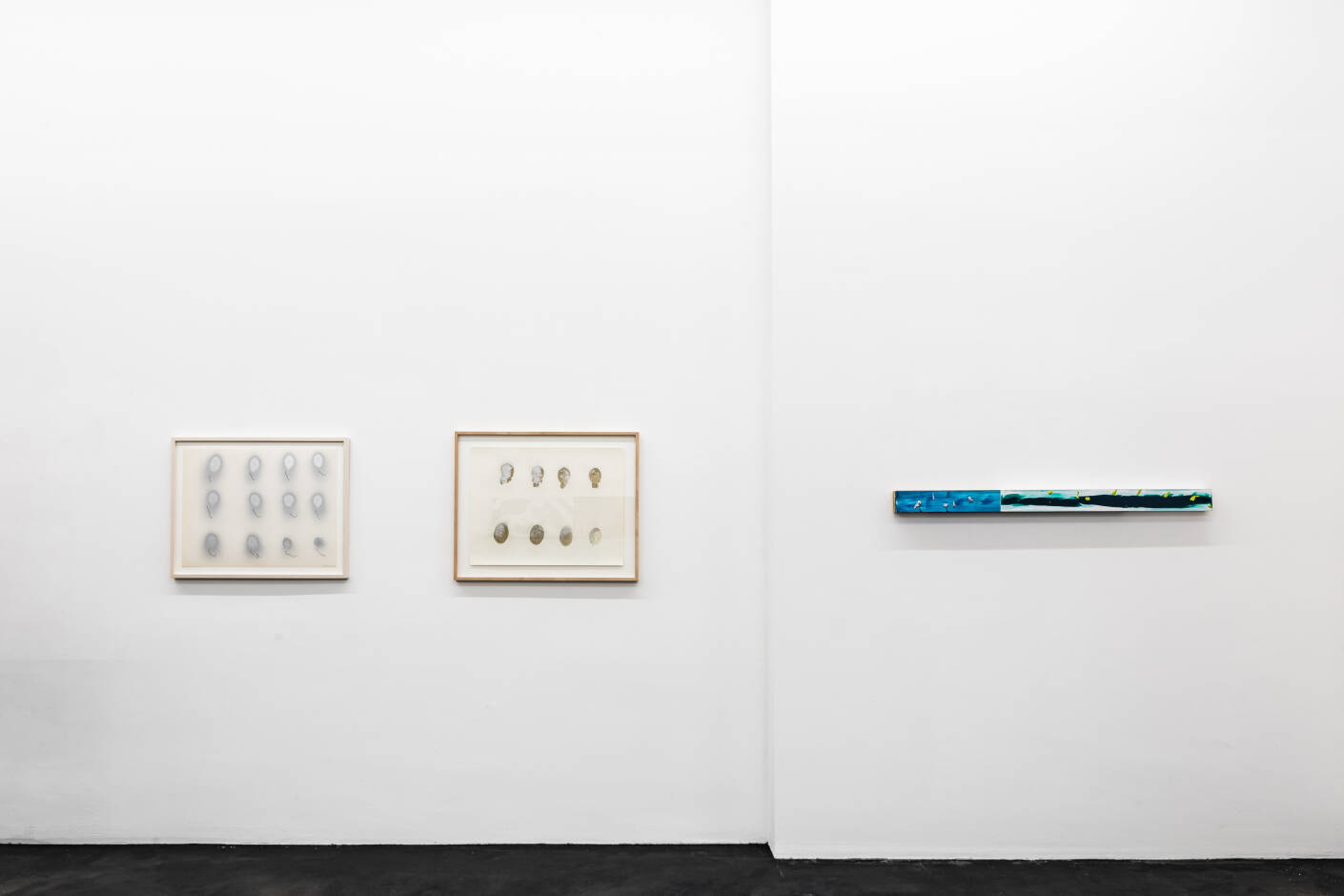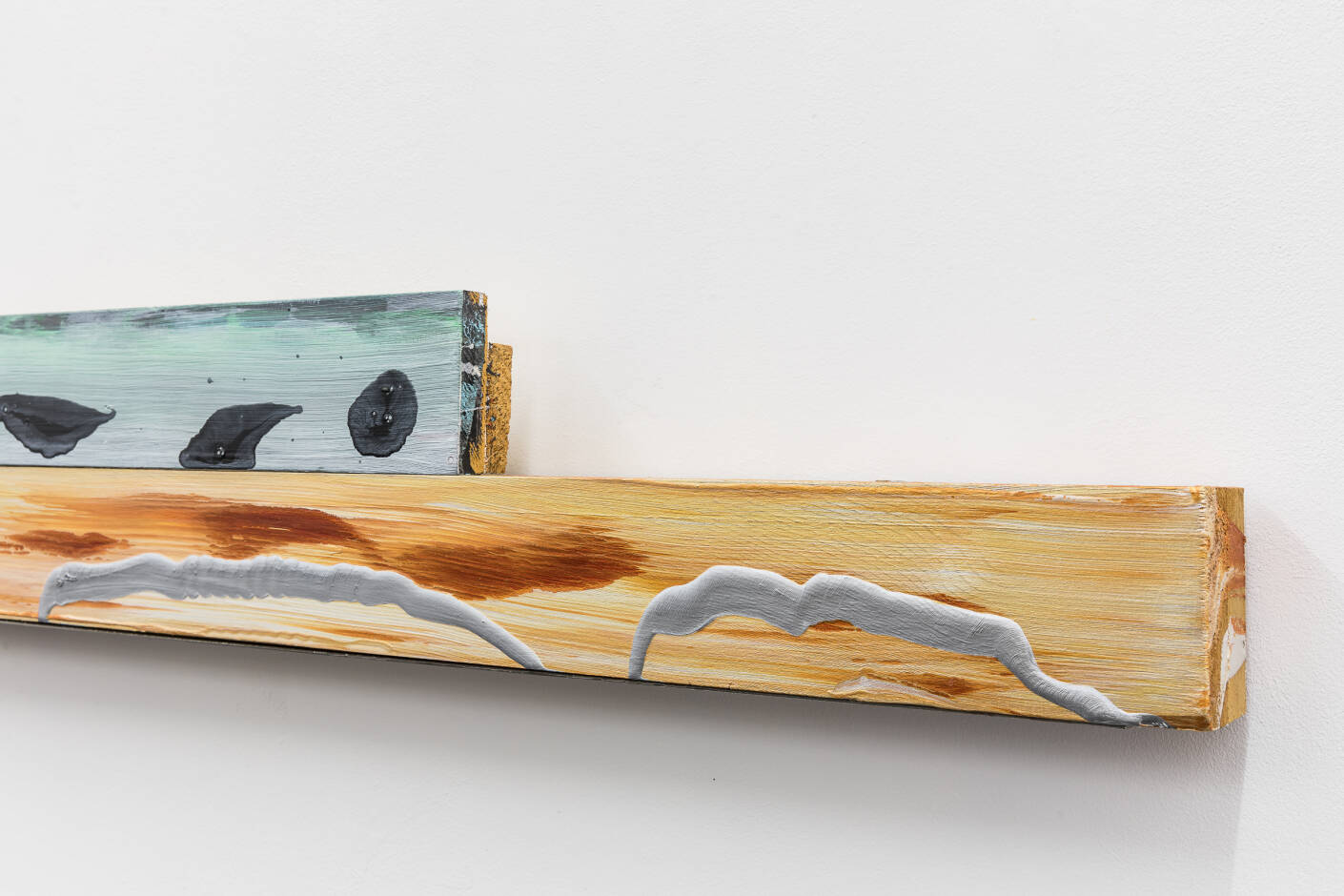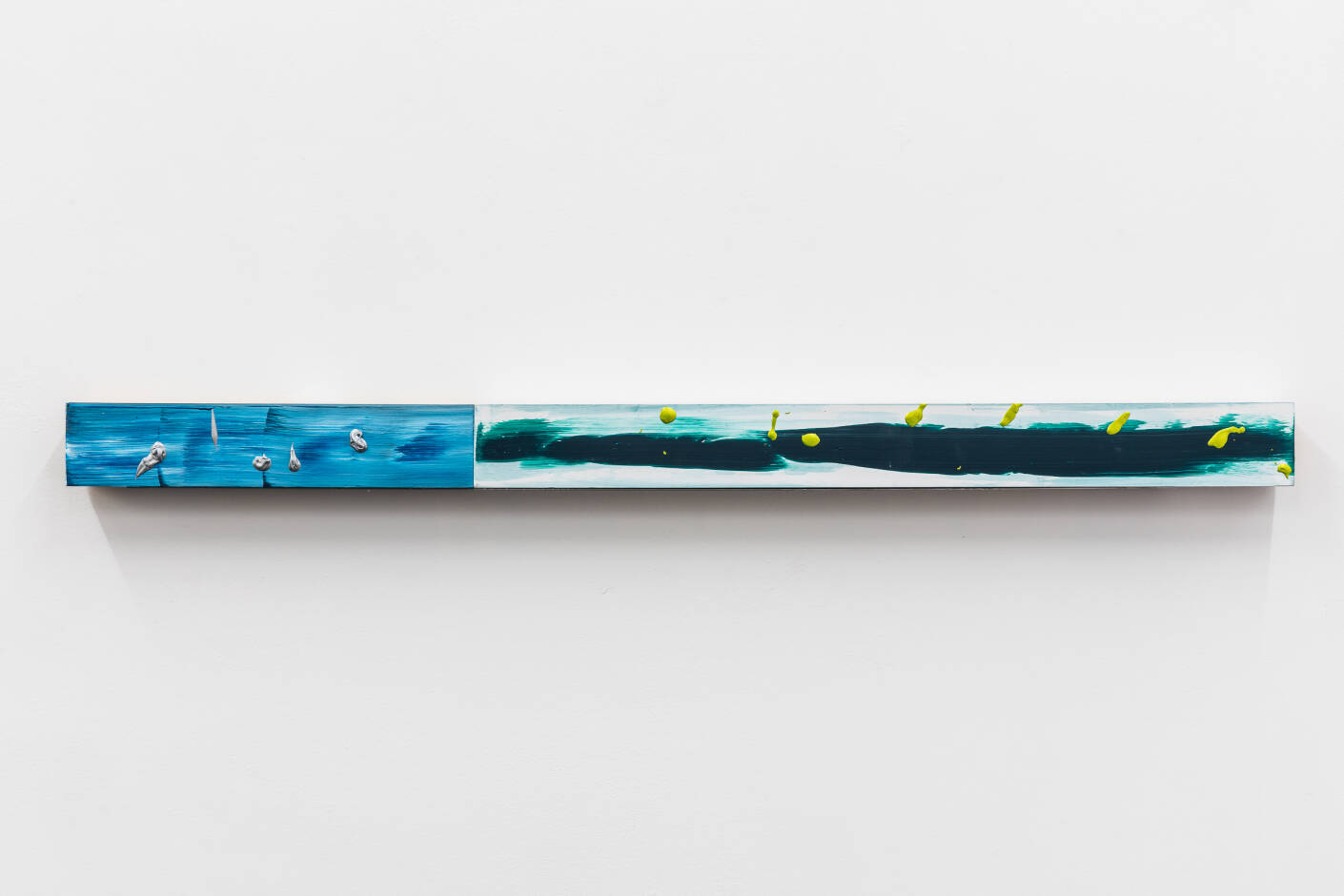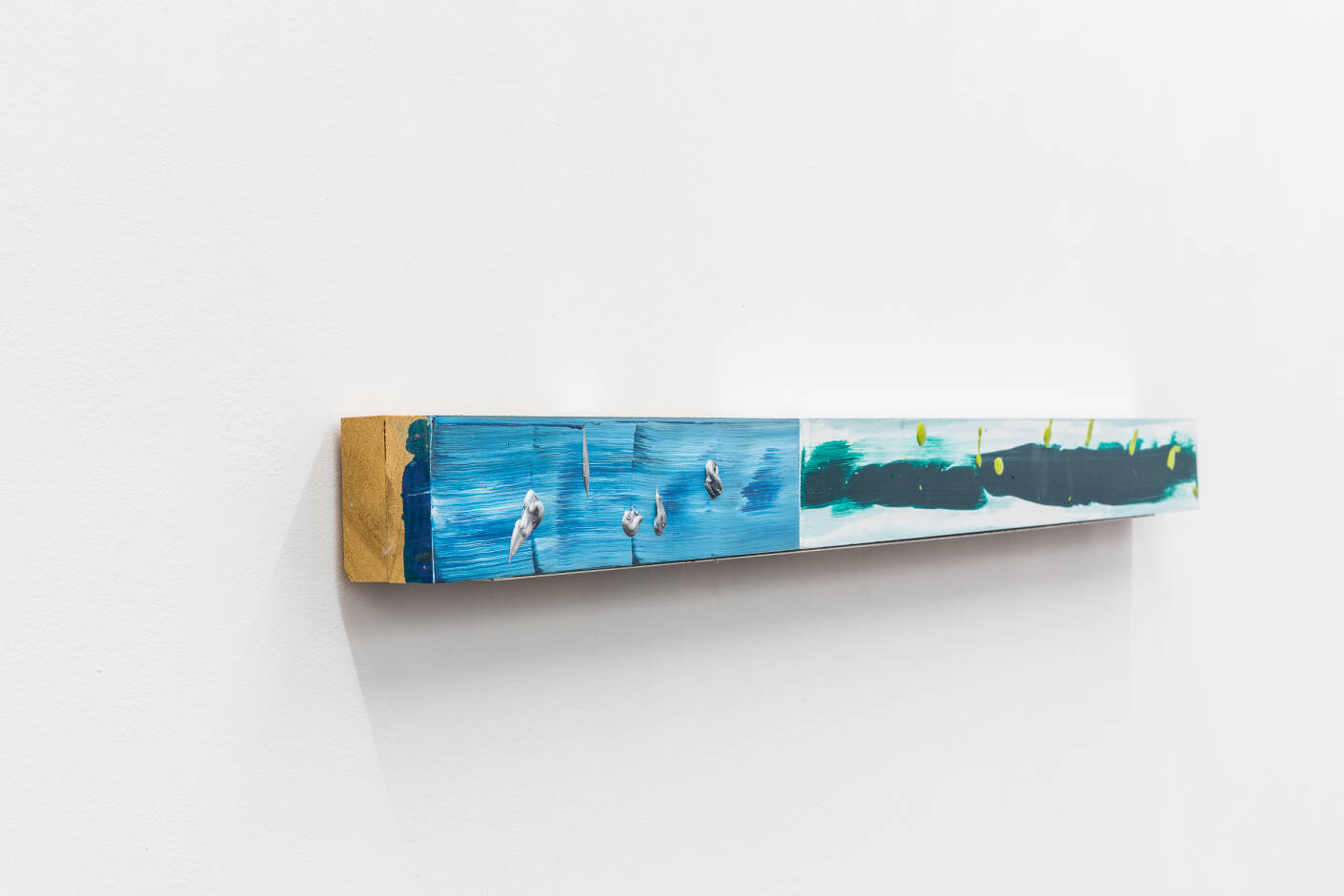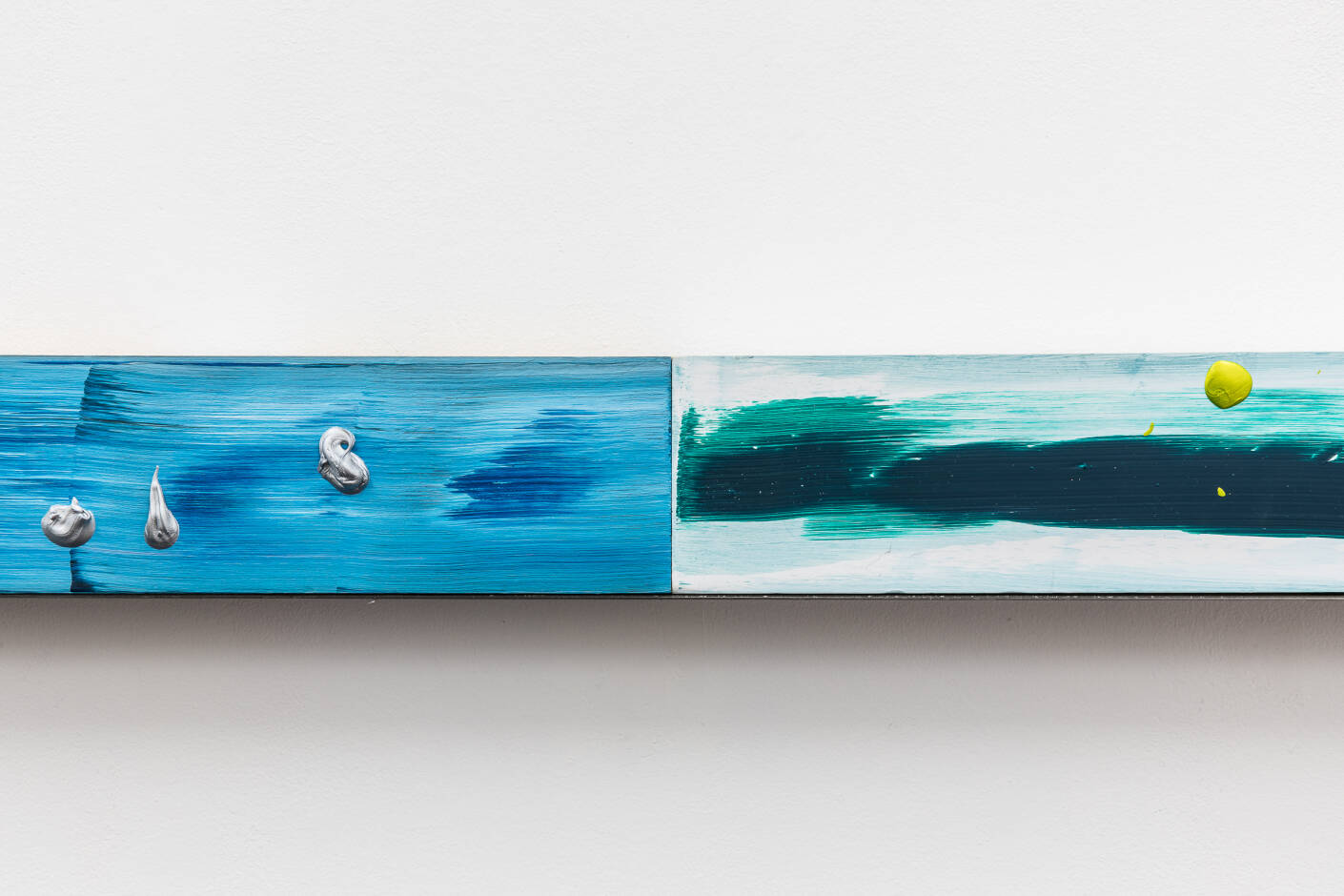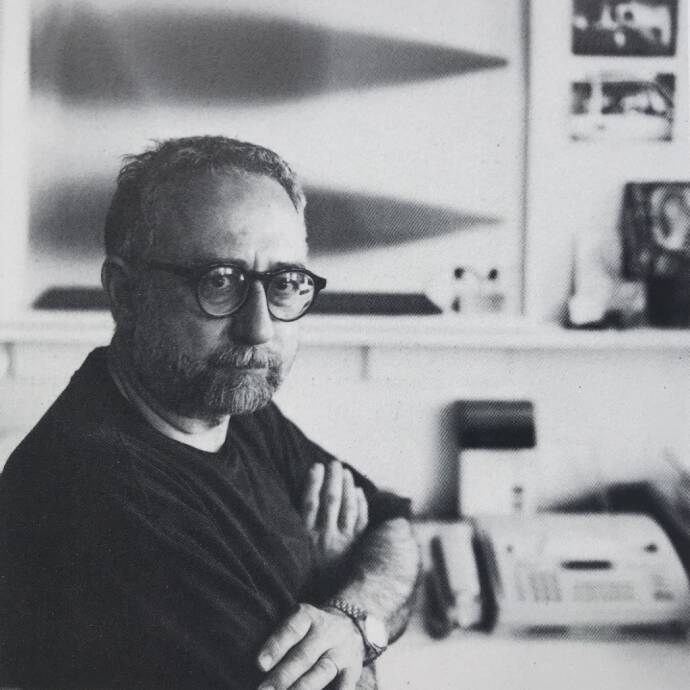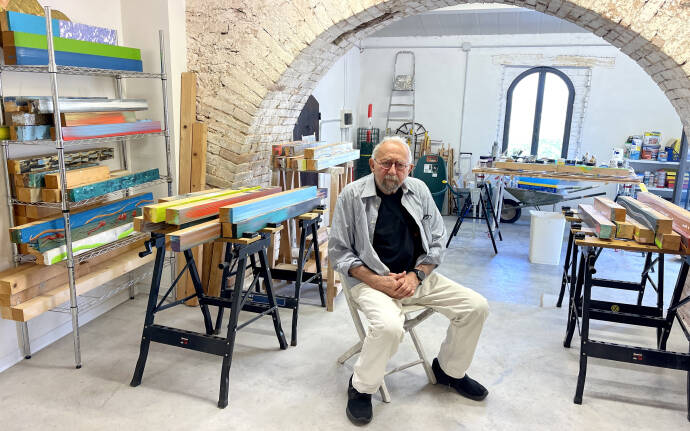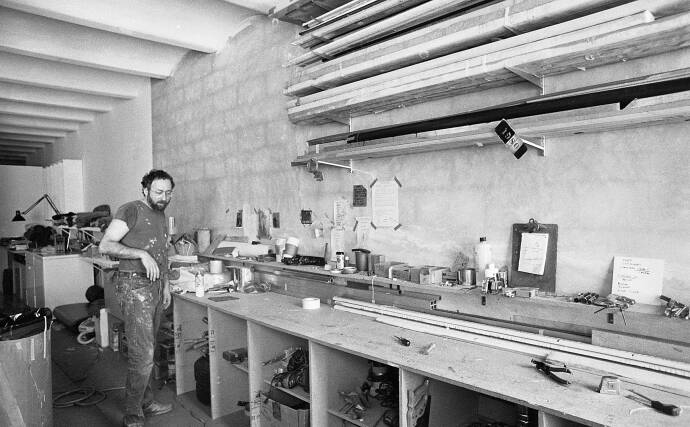Michael Venezia «The Future Covers the Past»
Opening: Thursday, September 1, 2022
Exhibition: extendd until November 12, 2022
Häusler Contemporary is pleased to announce a solo exhibition by Michael Venezia which will present new works from his series of «Block Paintings» as well as a distinctive series of paintings from 1967 in which the artist first used a spray gun, playing a significant part in the renewal of painting in the period around 1970.
The uniformly large, vertical-format paintings by Michael Venezia (b. 1935 in Brooklyn, US; lives in Brooklyn and Trevi, IT) which Häusler Contemporary is presenting in Zurich have an almost majestic quality. Divided into multiple vertical bands of color and rendered in earth tones, the paintings feature a variety of textures: at times the paint is applied densely, at others it is thinly layered or clumped together.
The works, the majority of which date back to 1967, are being exhibited in this combination for the first time. They mark a pivotal point in Venezia’s creative evolution: in making this series, he became one of the first artists ever to use a spray gun as a tool in painting. With this, and by «limiting himself» to a consistent canvas size, Venezia consciously exercises restraint. At the same time, he discovers new avenues of creativity by working on several canvases in parallel and by not subordinating his compositions to mathematical or structural criteria.
This approach, which resulted in the famous «Spray Paintings» of the 1970s and is also found in the «Block Paintings» the artist continues to create, gave Michael Venezia a significant role in ushering in a renewal of painting. The end of Abstract Expressionism, which had become frowned upon because of its elevation of the artist, had left this traditional genre in a state of crisis. Most exponents of minimalism and conceptual art, such as Dan Flavin and Sol LeWitt, who were close friends of Venezia’s, were turning to sculpture and installations.
Michael Venezia, however, was passionate about painting from the very beginning. Using a spray gun and drawing upon minimalist concepts, he found a way to leave Abstract Expressionism behind while continuing to hone his artistic achievements.
To complement the vertical-format canvases, we are exhibiting current works from among the «Block Paintings» that Venezia has been refining since the 1980s. The wooden blocks, previously arranged in «triads,» were initially painted in solid colors on the front side; later different, mostly horizontal, brushstrokes were applied to make them appear more dynamic. Now they bear color swashes that practically resemble writing.

